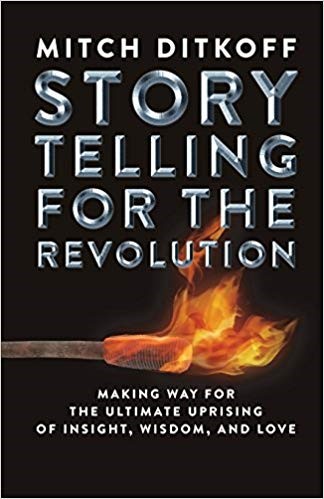100 Reasons Why You Don't Get Your Best Ideas At Work

Since 1987, I've asked 2,500 people where and when they get their best ideas. Less than 2% have said "the workplace."
Based on my 33 years of working with a ton of innovation-seeking organizations, here's my take on WHY you don't get your best ideas at work:
1. Too much to do, not enough time.
2. Too many distractions and interruptions.
3. You work in a risk averse organization.
4. Sleep deprivation.
5. Mental clutter.
6. Fear that someone will steal your idea.
7. You don't think of yourself as creative.
8. Boring meetings that put you in a bad mood.
9. You're not measured for the quantity or quality of ideas you generate.
10. Stultifying routine.
11. You are worried about layoffs and don't want to draw undue attention to yourself.
12. Poor ventilation -- not enough oxygen.
13. The last time you came up with a great idea, you were either ignored or ridiculed.

14. It's not in your job description.
15. It's not in the strategic plan.
16. It's not in the cards.
17. It's not in your favorite holy book
18. Your manager has made it clear that he/she does not have the time to consider your ideas.
19. Lack of immersion. Lack of incubation.
20. No one's ever told you that they want your ideas.
21. You are understaffed and don't have the time to try an innovative approach.
22. You are angry at the company.
23. You get no input from people outside your department.
24. Your company has just been acquired and you don't want your new overlord to succeed.
25. You know there's no one to pitch your new ideas to -- and even if there was, it's a long shot they would listen.
26. You're concerned that your great idea is so great that it will actually be accepted and then you will be expected to work on it in your spare time (which you don't have) with no extra resources made available to you.
27. All your great ideas are focused on trying to get Gina or Gary, in Marketing, to give you the time of day.
28. You're a new parent.
29. You've got other projects, outside of work, and have no energy left to think about anything else.

30. They don't pay you enough to think creatively.
31. You're expected to leave your mind at the door when you come to work.
32. No incentives or rewards.
33. You don't have the intrinsic motivation .
34. Actually, you don't want to be working at all -- and you wouldn't be working if you didn't have to.
35. You have not identified a challenge or opportunity that inspires you enough to think up new ideas.
36. No timely feedback from others.
37. There's no one to collaborate with.
38. Constantly changing priorities.
39. "Work," for you is synonymous with things you have to do not want to do, thus creating two parallel universes that never intersect.
40. You haven't read my award winning book yet.
41. It's too noisy.
42. Endless hustle and bustle.
43. You can't stop thinking about Covid-19.
44. You're too busy tweeting.
45. You have the attention span of a tse-tse fly.
46. Just when a good idea pops into your head, you dismiss it as "not good enough".
47. Your left brain has become a kind of Attila the Hun in relation to your Pee Wee Herman-like right brain.
48. You didn't get the memo.
49. You are too busy deleting spam.
50. The brainstorming sessions you attend are pitiful.
51. You believe that new ideas are a dime a dozen.
52. You're not paid to think. You're paid to DO.
53. Actually, you don't have a job.
54. You are hypoglycemic.
55. You're not allowed to listen to music at your desk.

56. You have no sense of urgency.
57. Your office or cubicle feels like a jail cell.
58. You're too busy filling out forms.
59. Not enough coffee.
60. You don't like your boss.
61. Existential despair.
62. There's a call on Line 2.
63. You have no time to incubate or reflect.
64. You've got to show results fast.
65. You know your manager will, eventually, get all the credit for your great ideas.
66. You've just been assigned to another project.
67. Brain fatigue.
68. You haven't tried Free the Genie yet.
69. You don't feel valued or appreciated.
70. You deciphered a much talked about sighting of a Crop Circle in England as meaning: "Stop coming up with good ideas at work."
71. Every extra minute you have is spent on Facebook.
72. There's too much stress and pressure on the job.
73. Naysayers and idea killers surround you.
74. Inability to relax.
75. It's summertime.
76. You've got this weird rash on your leg and you think it might be Lyme's disease or leprosy.
77. What you think of as a great idea and what your manager thinks of as a great idea are two entirely different things.
78. You know you won't get the funding, so why bother?
79. You're just trying to get through the day.
80. Every time you get a great idea, it's time to go to another meeting.
81. You only get your great ideas in the shower and there are no showers at work.
82. Your head is filled with a thousand things you need to do.
83. Relentless deadlines.
84. Too much input from others.
85. You have to stay focused on the "job at hand".
86. You'll only end up making the company richer and that is not what you want to do.
87. Those bright, annoying, overhead fluorescent lights.
88. No one besides you really cares.
89. You've just been assigned a project that is totally boring.
90. There is no one to brainstorm with.
91. Your husband/wife is complaining that all you ever do is work -- or talk about work.
92. You have the wrong astrological sign.
93. Your cultural upbringing has taught you that it is not your place to conjure up new ideas.
94. Your job is too structured to think outside the box.
95. People seem to be staring at you and that makes you self-conscious.
96. You're too busy.
97. Wait! How come they're taking so much out of your paycheck?
98. You're only working there to beef up your resume for the next job.
99. A vast right wing conspiracy.
100. You end up reading long lists like this which eats into whatever time you have to come up with good ideas.
A big thank you to Jim Aubele, Fran Tyson-Marchino, Nirit Sharon, Cindy Pearce, Robert Fischaleck, Deborah Medenbach, Amy de Boinville, Glenna Dumay, Bert Dromedary, and Sally Kaiser for their contributions to this list.
A good way to get ideas at work
Idea Champions
A virtual way to get new ideas
Our no BS creative thinking training
Posted by Mitch Ditkoff at 11:29 AM | Comments (5)
June 10, 2022Idea Brahmacharaya

In India, spiritual adepts who give up sex to pursue God are known as "brahmacharyas." They believe that their vital power (i.e. kundalini) needs to be completely intact in order for them to have the ultimate experience.
What does this have to do with you, oh passionate seeker of creative breakthroughs? Plenty -- especially when you consider that one of the main reasons why many new ideas never see the light of day is because their originators have a tendency to "prematurely articulate."
Indeed, the act of talking about one's idea -- especially to people who are not necessarily supportive of it -- often has a negative effect. Sometimes, talking about what we're doing takes the place of actually doing it. Other times, the kind of doubt, suspicion, and negativity we receive in response to the verbal expression of our creative passions, throws a wet blanket on the whole thing. Ouch!
Common sense and self-care is all you really need to pay attention to in this regard, but if you are looking for some guidelines to help ensure that common sense and self-care rule the day, here you go:
THE TECHNIQUE
1. In the beginning stages of the development of your big idea or creative project, be mindful of WHO you talk to about it. Be selective.
2. If you get the urge to talk about your idea to someone who is likely to respond with nothing but frowns and raised eyebrows, don't. Better to keep the idea or venture to yourself than "throwing your pearls before swine" (even if the "swine", in this case, is a family member, best friend, or a member of your tribe).
3. If someone asks you about your idea, check in with yourself, first, before talking. If it doesn't feel like the right time, thank the person for asking and let them know you will respond to their request "down the road" when you have something meaningful to share with them.
The Year of Living Creatively
Idea Champions
50 quotes on the power of ideas
Posted by Mitch Ditkoff at 09:54 PM | Comments (1)
May 09, 2022Unique, Discounted Products to Unleash Your Creative Mojo

If you are looking for a simple, engaging, inexpensive way to increase your odds of succeeding with your most inspired venture, I may have exactly what you need.
What previously I sold only to forward thinking organizations, I am now making available to the general public. Why? Because, post-COVID, I've decided to focus my efforts on individuals, schools, and entrepreneurs instead of corporations.
My creativity-sparking materials are time-tested, easy to use, and get results. Plus, 10% of all profits will be donated to Prem Rawat's humanitarian foundation.
THE PRODUCTS
Free the Genie: a deck of 55 creative thinking cards that spark big, bold ideas while shrinking the time between your ideas and their manifestation. Free the Genie has been used at 90% of these organizations. I am discounting my Free the Genie decks by 50 percent -- reducing the price from $49.00 to $24.50. Such a deal.
It's AHAhappening: A set of four, 16-page "fill-in-the-blank" guidebooks designed to help aspiring innovators get clear-headed, out of the box and make a quantum leap towards their heart's desire. NOTE: We are currently sold out of "Qualities of an Innovator", but the other four guidebooks are very much available. Only sold as a bundle of four: $24
Free the Genie and It's AHAppening Bundled Together: $42.00 (includes, at no extra cost, five online Self-Inquiry pages from my Year of Living Creatively course.
-- Shipping & handling in the US for single sets: $10
-- Shipping & handling outside of US: info@ideachampions.com
-- Bulk orders:info@ideachampions.com
Orders over $750 receive a free, 90-minute online Free the Genie session.
What our clients say about us
The creator of Idea Champions products
Idea Champions
Posted by Mitch Ditkoff at 04:02 PM | Comments (0)
July 13, 202110 Ways to Help Left Brainers Tap Into Their Creativity

If your job requires you to lead meetings, brainstorming sessions, or problem solving gatherings of any kind, chances are good that most of the people you come in contact with are left-brain dominant: analytical, logical, linear folks with a passion for results and a huge fear that the meeting you are about to lead will end with a rousing chorus of kumbaya.
Not exactly the kind of mindset conducive to breakthrough thinking.
Do not lose heart, oh facilitators of the creative process. Even if you find yourself in a room full of 10,000 left brainers, there are tons of ways to work with this mindset in service to bringing out the very best of the group's collective genius:
1. Diffuse the fear of ambiguity by continually clarifying the process
Most left-brain-dominant people hate open-ended processes and anything that smacks of ambiguity.
Next time you find yourself leading a creative thinking session, make it a point to give participants, early is the session, a mental map of the process you'll be using. Explain that the session will consist of two key elements: divergent thinking and convergent thinking.
In the divergent segment, you'll be helping people consider non-traditional approaches. In the convergent segment, you'll be helping people analyze, evaluate, and select from the multiplicity of ideas they have generated.
If participants are going to get uneasy, it will happen during the divergent segment. Your task? Periodically remind them of where they are in the process. "Here's our objective," you might say. "Here's where we've been. Here's where we are. And here's we're going. Any questions?"
2. Get people talking about AHAS! they've had
No matter how risk averse or analytical people in your sessions may be, it's likely that all of them -- at some time or another -- have had a really great idea.  "Creativity" really isn't all that foreign to them (although they may think it is). All you need to do to get them in touch with that part of themselves is help them recall a moment when they were operating at a high level of creativity.
"Creativity" really isn't all that foreign to them (although they may think it is). All you need to do to get them in touch with that part of themselves is help them recall a moment when they were operating at a high level of creativity.
Get them talking about how it felt, what were the conditions, and what preceded the breakthrough. You'll be amazed at the stories you'll hear and how willing everyone will be, after that, to really stretch out.
3. Transform limiting assumptions
One of the biggest obstacles to creativity is the assumption-making part of our brain -- the part that is forever drawing lines in the sand -- the part that is ruled by the past. Most people are not aware of the assumptions they have -- in the same way that most drivers are not aware of the blind spot in their mirror.
If you want people to be optimally creative, it is imperative that you find a way to help them identify their limiting assumptions about the challenge they are brainstorming. "Awareness cures," explains psychologist Fritz Perls. But DON'T get caught in a lengthy discussion about the collective limiting assumptions of the group. This is often just another way that left-brain dominant participants will default to analyzing and debating.
Instead, lead a process that will help participants identify and explore their limiting assumptions. Then, time allowing, help them transform each of these limiting assumptions into open-ended "How can we?" questions for brainstorming.
4. Encourage idea fluency
Dr. Linus Pauling, one of the most influential chemists of the 20th century, was once asked, "How do you get a good idea?" His response? "The best way to get a good idea is to get lots of ideas and throw the bad ones away."
That's why "Go for a quantity of ideas" is the first rule of brainstorming. You want to encourage people, early and often, to go for quantity. This will short circuit participants' perfectionistic, self-censoring tendencies -- two behaviors that are certain death to creativity.
5. Invite humor
The right use of is a great way to help people tap into their right brains. Indeed, "haha" and "aha" are closely related. Both are the result of surprise or discontinuity. You laugh when your expectations are confronted in a delightful way.
Please note, however, that your use of humor must not be demeaning to anyone in the room. Freud explained that every "joke" has a victim and is used by the teller to gain advantage over the victim -- a way to affirm power. And when a group finds itself in the realm of power (and the yielding of power), it will undoubtedly end up in left brain territory.
You don't want to feed that beast.
Instead, set the tone by telling a victimless joke or two, or by your own self-deprecating humor. But even more important than "joke telling" is to allow and encourage a free flowing sense of playfulness.

6. Do the right brain/ left brain two-step
Brainstorming for 3, 4 or 5 hours in a row is unusually exhausting, resulting in the "diminishing returns" syndrome. Creative thinking, like life itself, follows natural laws. Day is followed by night, winter by spring, inbreath by outbreath.
That's why the design of your creative thinking session needs to alternate between the cerebral and the kinesthetic -- between brainstorming and some kind of hands-on, experiential activity. By doing this two-step, participants will stay refreshed and engaged.
7. Periodically mention that chaos precedes creative breakthroughs
Left-brained, logical people are rarely comfortable with ambiguity, chaos and the unknown. It seems messy. Disorganized. Downright unprofessional. Indeed, much of the Six Sigma work being done in corporations these days is to reduce variability and increase predictability.
Paradox alert!
If you want to get really creative, you will need to increase variability and help participants get more "out of control." Picasso said it best, "The act of creation is first of all an act of destruction." Tom Peters said it second best, "Innovation is a messy business."
So, when you sense that your session is filled with ambiguity-phobic people, remember to mention how it's normal for ambiguity to precede a creative breakthrough. You may even want to mention how you will be purposefully infusing the session with moments of ambiguity, just to prime the creative pump.
8. Establish criteria for evaluation
The reason why ideas are usually considered a dime a dozen is because most people are unclear about their process for identifying the priceless ones. That's why a lot of brainstorming sessions are frustrating. Tons of possibilities are generated, but there is no clear path for winnowing and choosing.
Let's assume, for example, that the session you facilitate generates 100 powerful, new ideas. Do you have a process for helping participants pare the 100 down to a manageable few? If not, you need one. Ideally, the criteria for selecting ideas will be clarified before the session and introduced to participants early in the session.
Please note that there is some debate amongst brainstorm mavens as to when to offer the criteria. Some say this should happen at the beginning of the session (to help assuage the left brain need for logic and boundaries). Others suggest delaying the identification of criteria until just before the idea evaluation process. Either way will work. Your call.
9. Be a referee when you have to
No matter how many ground rules you mention about "suspending judgment" or "delaying evaluation," you are going to have some heavy hitters in the room just waiting for a moment to doubt your approach or "the process."
Indeed, one of the favorite (often unconscious) strategies of some left-brainers is to debate and question the facilitator every step of the way. While you want to honor their concerns and right to speak their truth, you also want to hold the bar high for the intention behind the brainstorming session -- and that is to challenge the status quo, entertain the new, and create space for imaginations to roam.
Don't be afraid to be firm with participants who want to control the session. At the very least, ask them to suspend their need for "convergence" (i.e. evaluation, judgment, decision making) to the end of the session when there will be plenty of time to exercise that very important muscle.
10. Consult with the tough people on the breaks
Every once in a while, a really opinionated person shows up in a session -- someone who is probably very smart, competent, experienced, with a big BS detector, and just enough arrogance to make you feel uncomfortable. These people can really affect the group, especially if they hold positions of power in the organization.
In the best of all worlds, these people would always be on your side. They won't be. Be careful about playing to these people in a neurotic attempt to get their approval. You won't get it. But DO seek them out on breaks and engage them. Get them talking. Pay attention. See if you can pick up any useful feedback or clues about revising your agenda or approach.
Even though you wouldn't choose to be trapped on a desert island with them, these folks may turn out to be a huge blessing -- because they are carriers of a particular sensibility that needs to be honored. More than likely, some of the other people in the room are feeling the same thing, but have been too polite to show their true colors. So, don't be afraid of these people. They can be a very valuable resource.
Idea Champions
Brainstorming for left-brainers
Right-brain teaching stories
Posted by Mitch Ditkoff at 10:43 PM | Comments (3)
May 07, 2021APPLIED CREATIVITY: A New Book by Mitch Ditkoff

You know what I just realized? I wrote a book without realizing it. Really. For the past 11 years, I've been writing a series of articles on creativity for my Heart of Innovation blog. Then, semi-caffeinated, just a few weeks ago, it dawned on me that, hidden within my blog, not unlike the white arrow hidden in the FedEx logo, was something unseen -- an entire book. Like a 250-page book. I'm in the process, now, of editing it.
If you would like an alert when it's available, simply email office@ideachampions.com. I promise not to sell, rent, barter, or give away your email address. I will treat it with utmost confidentiality.
What follows are 82 of the 100 chapters in the book. If one of them strikes your fancy and you'd like to read it, shoot me an email (mitch@ideachampions.com) and I will send you the link before hell freezes over.
1. The Hero's Journey and the Creative Process
2. Ask for All the Help You Need to Create Something New
3. The Six Sides of the So-Called Box
4. Insect Sex: Why You Need to Ask Why
5. The Creativity Manifesto
6. An Invitation to Dive Deeper Into Your Own Creative Process
7. Idea Brahmacharaya
8. Skillset vs. Mindset
9. The Challenge Most Creative People Face
10. One Hundred Lame Excuses for Not Innovating
11. Fifty Two Quotes on the Creative Process
12. Why Tell Stories?
13. Twenty Reasons Why People Get Their Best Ideas in the Shower
14. What Does It Take to Learn Anything New From Somebody Else?
15. The Beauty of Feedback. (It's Not a Weapon. It's a Mirror).
16. Thirty Two Quotes on Mastery
17. The Art of Non-Judgmental Listening
18. To Create the Future, See Hidden Patterns and Challenge Them
19. Twenty Five Simple Ways to Free Up Your Creativity
20. Try to Love the Questions
21. The Perception of Ideas as Problems
22. Storytelling as a Way to Transmit Tacit Knowledge
23. Enter the Movie Theater of Your Own Creative Process
24. Finish What You Started: Five Feet Off the Ground
25. Frame the Real Problem: Josef the Baker
26. Frustration and Constraint as Catalysts for Creativity
27. Are You an Idea Addict?
28. A Real Life Example of the Power of Giving Feedback
29. What I Learned from Listening to Bolero for 14 Hours
30. How to Foster a Sustainable Culture of Innovation
31. How to Tell a Good Story
32. One Hundred and One CreativiTeas
33. Innovation as a Happy Accident
34. The Martial Arts of the Mind
35. What Porcelain Dogs Can Teach Us About Brainstorming

36. The Awesome Power of Immersion
37. How to Attract a Big AHA
38. The Real Value of Confusion
39. The Path Is Made By Walking On It
40. Ten Chemical Salesmen Step Over the Line
41. Why AHA and HAHA are Related
42. How I Started My Business: It All Began With Balls
43. Twelve Ways to See What's Not Immediately Obvious
44. Using Story as a Way to Communicate Big Ideas
45. What Have You Accomplished?
46. Quarantining Your Mind
47. Quitting and the Poetry of Life
48. The Pool Player and the Non-Linearity of Life
49. What You Can Learn from the FedEx Logo
50. Why Immersion is So Important
51. Dreaming the Solution
52. On Finding the Elegant Solution
53. Define Your Real Problem
54. The Finger Snap
55. The Fisherman and the Investment Banker
56. The Sanctuary Within
57. Move the Hole
58. Fourteen Ways to Get Breakthrough Ideas
59. Innovation Begins with Fascination
60. How to Sell Without Selling

61. Non-Judgmental Listening as a Catalyst for Innovation
62. Go Beyond Your Limiting Assumptions
63. How to Create an Idea Factory
64. The Value of Nothing
65. Brainstorming vs. Braincalming
66. On the Brink of a Breakthrough
67. Standing on the 50-Yard Line
68. Creators on Creating
69. Look to Nature for Creative Breakthroughs
70. Free the Genie
71. What You Can Learn About Creativity from W.C. Fields
72. Why People Work in Cafes
73. How to Start a Business After You Retire
74. The Riches Under Your Pillow
75. The Cure for the Creative Blues
76. The Good Thing About Bad Ideas
77. Thirty Ways to Know If You Have What It Takes to Innovate
78. How to Move From Your Left Brain to Your Right
79. Act As If!
80. What You Can Learn from Steve Job's Introduction of the iPhone
81. Need a Breakthrough? Take a Break
82. Listen to Your Subconscious Mind
MitchDitkoff.com
My clients
My online course on unleashing creativity
Posted by Mitch Ditkoff at 04:01 PM | Comments (0)
January 04, 2021WHO ACTUALLY CREATED "The Year of Living Creatively"?
 I did. Mitch Ditkoff.
I did. Mitch Ditkoff.
Well then, who am I?
73 years ago, two very different people got together and created a third person -- me. Neither my mother or father were particularly "creative", but they had whatever it took to spark new life and I was very glad they did.
They are long gone now, but I am still here -- and while I am, I am committed to doing everything humanly possible to not only keeping that creative spark of life alive in myself, but in others as well -- a noble aspiration, for sure, but what are my qualifications to deliver on my commitment? Why should YOU, a person with big ideas, but precious little time, spend any of your time with me -- or more specifically -- exploring my YEAR OF LIVING CREATIVELY service?
Here's the simple reason: I've been studying the creative process for more than 40 years and understand how it works, what gets in its way, and how to help people have the best possible chance of manifesting their own, innate brilliance. And I've done it with thousands of people all over the world -- including people in these organizations.
But I don't just teach about it -- I have practiced it, myself, in the process of co-founding Idea Champions, Brainstorm Champions, and Face the Music, as well as writing Storytelling for the Revolution (and five other books), creating Free the Genie online, Free the Genie cards, creating Wisdom Circles in Mexico, Australia, and the US, and facilitating more than 1,000 ideation sessions for some of the most powerful organizations in the world.
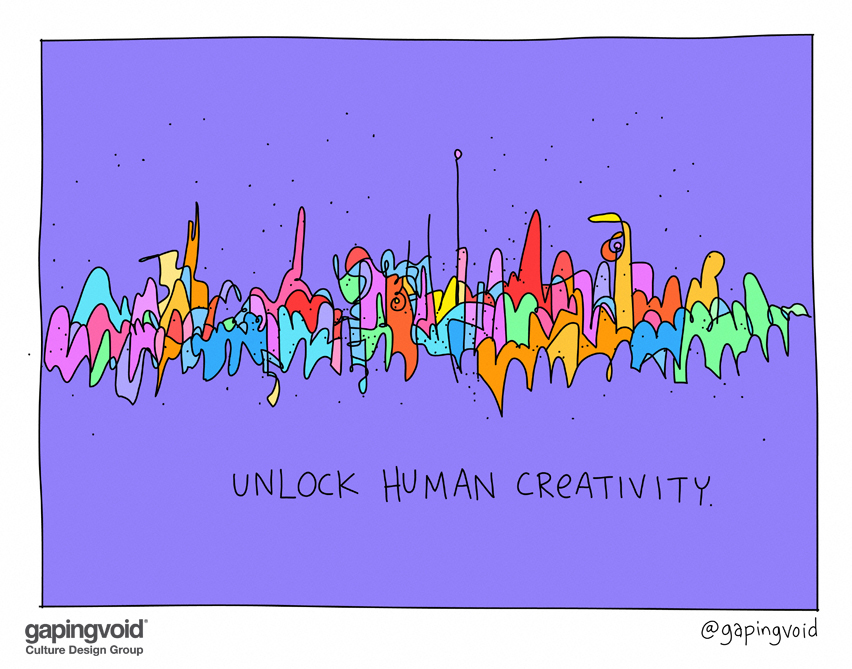
I am not bragging, ladies and gentlemen -- simply setting some context for you -- my attempt to get on your radar screen long enough for you to consider the possibility of allowing me to be of service you.
Mine has not been a straight and narrow path.
While most of my clients assume I am a psychologist, my formal education is in poetry -- where I was a graduate student at Brown University. It didn't take long, in that academic environment, to realize I wanted to live the poetry of life, not just write about it -- and so I quit -- thus beginning a long and winding road of "professions" that taught me a lot about human nature and the heart's desire -- the kind of professions that left my mother somewhat baffled around the canasta table: dishwasher... waiter... house painter... gardener... cook... day care teacher... underground newspaper editor... community organizer... freelance writer... social worker... political speechwriter... subway musician... monk... co-Founder of a corporate consulting company... co-founder of a corporate blues band... winner of the best Innovation Blogger of the Year award... creator of Wisdom Circles... six-time author... learning consultant to an Islamic school in Australia... and now, creator of THE YEAR OF LIVING CREATIVELY.

Bottom line, I know what it takes to originate, develop, and manifest bold new ideas -- and often against all odds.
Why am I offering The Year of Living Creatively now? Because the old world order is collapsing. So many of the out-dated systems and structures we have relied on are crumbling right before our eyes. In the face of this massive shift, I've noticed there are two basic kinds of human response: Some people get paralyzed. Others get animated -- fueled by the recognition that it is time to change.
Bottom line, my business model has radically changed since Covid-19 disrupted everything: from serving organizations to serving individuals. From delivering my services onsite to delivering them online.
At first I resisted this change, not wanting to "start all over again" after 33 years of building my own empire. But then, in a flash, in the middle of a quarantine, 10,000 miles from home, I got it. Or, as Charles Darwin said: "It is not the strongest of the species that survives, nor the most intelligent; it is the one most adaptable to change."
What does this have to do with you? Everything. Or nothing. You get to decide.

My offer is a simple one -- to provide you with an elegant way to radically increase the odds of manifesting your heart's desire -- to go over, around, and through whatever obstacles are in the way of working your magic in the world.
The service I provide is like type O blood. It's the universal donor. It applies to everyone, no matter what form their work takes. Like water, it takes the shape of any vessel it is poured into. Think of it, if you like as a kind of GPS for your heart's desire. I am talking about the process of discovering new and better ways of navigating your own creative process -- that deeply felt aspiration to make your contribution in the world, no matter your age, astrological sign, education, nationality, religion, or politics.
While it may seem inflated to say what I am about to say, I am going to say it anyway -- I have caught lightning in a bottle and I want to make it available to you. My hope? That you will open this bottle and it will help light your way forward.
And since I know that 95% of the people reading this are probably thinking "I don't have the time" and "I don't have the money", I have done my best to make THE YEAR OF LIVING CREATIVELY both time-efficient and affordable. Twenty minutes a week is all it will take. And the introductory price is less than $5.00 a week.
THE YEAR OF LIVING CREATIVELY launches in May.
If you want me to let you know when it launches, simply email office@ideachampions.com with the phrase "The Year of Living Creatively" in the subject line. I will not sell your email address to anyone. I will not rent it or give it to anyone. I will not hustle you with "upselling" and other questionable practices. What I will do, is everything within my power to be of service to you in the most honorable way possible.
How Einstein would solve a problem if he only had an hour
Illustration: gapingvoid.com
Posted by Mitch Ditkoff at 10:26 AM | Comments (1)
July 09, 2020The DNA of Idea Champions Workshops and Trainings

Most people think that the ability to be innovative is a mystical state available only to the chosen few.
The effort, they imagine, takes a lot of time and hard work. And since they don't have time and don't like hard work, they reason that innovation just isn't in the cards for them.
But innovation is not a mystical state. It's a natural state -- a human birthright. The people in your organization, in fact, already are innovative. The only thing is: their natural ability to be innovative is being obscured by their own habits of mind and a variety of bothersome organizational constraints.

Their challenge is the same one as seeing the "hidden" arrow in the FedEx logo (look between the "E" and the "X").The arrow has always been there, but most people never notice it.
This is the work of Idea Champions. We help people see what they already have, but don't know how to access.
We help people make meaningful adjustments of vision, insight, and perception so they can acknowledge, embrace, and apply their innate ability to be more creative on the job -- and, for those clients who want to reinvent their "innovation process", we help them figure it out.
What follows is a brief summary of how we do this...
1. Know Thy Customer:
Long before we ever get into a room with participants, we do our due diligence -- learning about WHO we are serving, WHAT they expect, and HOW our time with them will be the most significant.
Sometimes this takes the form of phone interviews. Or online polls. Or studying key documents our clients send us in order to understand their current reality, industry, business challenges, organizational constraints, and hoped for outcomes.
2. Customization:
Based on our assessment of our client's needs, we put together a game plan to get the job done. Towards this end, we draw on more than 100 "innovation-sparking" modules we've been developing since 1986.
3. Co-Creation:
Early in the design process, we invite our clients to give us feedback about our approach. Their feedback stirs the creative soup and provides us with the input needed to transform a good session design into a great one.
4. Spacing In:
We make a great deal of effort to ensure that the space in which our sessions take place are as ideal as possible. Form may follow function, but function also follows form.
When participants walk into an Idea Champions session, they begin "mind shifting" even before the session begins. It is both our belief and experience that culture/environment is a huge X factor for creativity and innovation.
5. Drive Fear Out of the Workplace:
W. Edwards Deming, one of America's most revered management consultants, was a big proponent of removing fear from the workplace. So are we. Towards that end, each of our sessions begins with a norm-setting process that makes it easy for participants to establish a dynamic culture of innovation for the day.

6. Mindset:
Organizations don't innovate, people do. But not just any "people." No. People who are energized, curious, confident, fascinated, creative, focused, adaptive, collaborative, and committed.
People who emerge from our sessions are significantly more in touch with these "innovation qualities" than when they began. Their minds have changed. They see opportunities when, previously, all they saw were problems.
They let go of perfectionism, old paradigms, and habitual ways of thinking. In their place? Open-mindedness, listening, idea generation, original thinking, full engagement, and the kind of commitment that drives meaningful change.
7. Balancing Polarities:
Human beings, by nature, are dualistic, (i.e. "us" vs. "them," "short-term" vs. "long-term," "incremental" vs. "breakthrough," "left brain" vs. "right brain".)
The contradictions that show up in a corporate environment (or workshop) can either be innovation depleters or innovation catalysts. It all depends how these seeming conflicting territories are navigated. Idea Champions is committed to whole-brain thinking -- not just right brain or left brain thinking.
Our work with organizations has shown us that one of the pre-conditions for innovation is a company's ability to strike the balance between these polarities.
Each workshop we lead and each consulting engagement we commit to is guided by our understanding of how to help our clients find the healthy balance between the above-noted polarities.
8. Expert Facilitation: "A rock pile ceases to be a rock pile when someone contemplates it with the idea of a cathedral in mind," wrote St. Exupery.
This, quite simply, is what Idea Champions does. But we do far more than just contemplate. We also architect and build.
Since 1986, we've been facilitating innovation-sparking engagements for a wide variety of industries. We have mastered the art and science of turning lead (or leaders) into gold. And we can train your people to do the same thing we do.
9. Experiential Challenges: "What I hear, I forget. What I see, I remember. What I do, I understand."
So said the great Chinese sage, Confucius. This 14-word quote describes the essence of our work. Simply put, we get people off their "ifs, ands or buts," and into the experience of what's possible.
While we value theory, research, models, data, best practices, business cases, and most of the other flora and fauna of business life, we've come to understand that the challenge of sparking insight, breakthrough, and change, is best accomplished by doing -- not talking.
That's why all of our sessions include experiential challenges that provide participants with visible ways of seeing innovation in action -- what supports it and what obscures it.
10. Emergent Design: Awakening the creativity of an organization's workforce is not a follow-the-dots exercise.
Although all of our interventions begin with carefully crafted project plans and agendas, our facilitators are fluent in the art and science of making the kind of real-time adjustments, refinements, and improvisations that are the difference between a good session and a great session.
Facilitators who attempt to imitate our approach find it difficult to succeed without first learning how to master the art of emergent design. The good news is that it can be learned -- and this is just one of the things we teach in our Train the Trainer programs.
11. Edutainment: Idea Champions sessions are a hybrid of two elements: education and entertainment. We know that when participants are enjoying themselves their chances of learning increase exponentially.
That's why we make all of our sessions a hybrid of education and entertainment. Participants do not get tired. They do not get bored. They do not sneak long looks at their smart phones.
12. Full Engagement: Idea Champions sessions are highly participatory. Our facilitators are skilled at teasing out the brilliance of participants, regardless of their social style, job title, or astrological sign.
But perhaps more importantly, our facilitators know how to help participants tease out each others' brilliance. Eventually, everyone gets into the act. The shy people take center stage and the power players take a back seat. The collective wisdom in the room gets a much-needed chance to be accessed and expressed.
13. Convergence: Idea Champions is successful because what we do works. And one of the reasons WHY it works is because our sessions help participants translate ideas into action.
Ideas are powerful, but they are still only the fuzzy front end of the innovation process. Ultimately, they need to turn into results. Creativity needs to be commercialized. Our workshops, trainings, and consulting interventions help our clients do exactly that.
14. Tools, Techniques, and Takeaways: Ideas Champions closes the gap between rhetoric and reality. We don't just talk about innovation or teach about it -- we spark the experience of it. And we do that in very practical ways.
One way is by teaching people how to use specific, mind-opening techniques to access their innate creativity. Another way is by providing our clients with a variety of innovation-sparking guidelines, processes, and materials that can be immediately used on the job.
Idea Champions
Creating a Culture of Innovation
Storytelling at Work
Brainstorm Facilitation Training
What our clients say
Posted by Mitch Ditkoff at 04:06 PM | Comments (1)
April 07, 2020GOOD NEWS! Idea Champions Waiving All Fees for Free the Genie

Those of us here at Idea Champions don't know anyone who hasn't been affected by the Coronavirus calamity. Many of our clients are in trouble. Friends are out of work. Families are stressed. And yes, people we know are sick.
In response to this global calamity, I have found myself asking, like a lot of people, "How can I help? How can I be of service?" Though I have no face masks to give, no ventilators, and no miracle cures, I do have an online, creative thinking tool that can help people generate bold new ideas to help them navigate their way forward, i.e. ideas to grow their business... ideas to start a new business... or simply ideas to more skillfully adapt to these very stressful times.
And I am giving it away for free.
All you need is a compelling question that begins with the words "How can I?" or "How can we?", some curiosity, and 15 - 30 minutes to dive in.
PLEASE NOTE: Free the Genie is not a magic pill, but it can work magic -- that is, IF you have an open mind and a genuine need to go beyond the status quo.

So there you have it -- our best shot at helping you give it your best shot. Click here for your free subscription to Free the Genie. (PS: We will never sell, rent, trade or give your email address to anyone, anytime, anywhere. The effort we are making is not a marketing ploy. We are sincerely wanting to be of service to people in need during these very challenging times.)
If online creative thinking tools are not your thing, maybe one of the following articles will be the spark you need to work your magic in the world.
Einstein's approach to problem solving
50 awesome quotes on possibility
Listen to your subsconscious mind
25 ways to free up your creativity
How to attract a breakthrough idea
20 quotes on beginning
101 CreativiTeas for Innovators
The awesome power of immersion
100 quotes on what it takes to innovate
Posted by Mitch Ditkoff at 02:36 AM | Comments (0)
November 30, 2019Are You an Idea Addict?

There are lots of things in this world people get addicted to: alcohol, nicotine, heroin, sex, and iPhones, just to name a few. But perhaps the biggest addiction of them all is the addiction to our own ideas. Here's how it works:
We think something up. We feel a buzz. We tweak it, we name it, we pitch it, and POOF, the addiction begins.
At first, like most habits, it's a casual pursuit with a thousand positive side effects: increased energy, renewed focus, and a general feeling of well-being. Like wow, man. But then... we think about it in the shower. We think about it in the car. We think about it when people are asking us to think about other things. We even dream about it.

Soon we want everyone to know about it. We want them to feel the buzz. We want them to nod in agreement. We want them to recognize just how pure our fixation is.
If this is where it ended, it wouldn't be that big of a deal. I wouldn't be calling it an addiction. Maybe I'd be calling it an "inspiration," or a "commitment" or a "visitation from the Muse." But it doesn't end there. It goes on and on and on and on -- often to our own detriment.
If you are launching a new, creative venture, of course, you want to conjure up cool ideas. That's a good thing. But if you cling to ideas just because they're yours, or just because you've invested major time and energy into in them, then it's time to take a good look of what "intoxicating ideas" of yours it might be time to let go. Commitment is one thing. Addiction is quite another.
What hot, new idea of yours might you be just a little bit too addicted to?
Idea Champions
Brainstorm Champions
MitchDitkoff
Posted by Mitch Ditkoff at 08:20 PM | Comments (2)
February 17, 2019Innovation as a Happy Accident

A little known fact about innovation is that many breakthroughs have not been the result of genius, but "happy accidents" -- those surprise moments when an answer revealed itself for no particular reason.
The discovery of penicillin, for example, was the result of Alexander Fleming noting the formation of mold on the side of petri dish left uncleaned overnight.
Vulcanized Rubber was discovered in 1839 when Charles Goodyear accidentally dropped a lump of the polymer substance he was experimenting with onto his wife's cook stove.
More recently, 3M's post-it was also the result of an accident in the lab. Breakthroughs aren't always about invention, but the intervention required, by the aspiring innovator, to notice something new, unexpected, and intriguing.
LEARN FROM YOUR HAPPY ACCIDENTS:

1. Think about a recent project, pilot, or business of yours that did not turn out the way you expected.
2. Ask yourself if any of the unexpected results offer you a clue or insight about how you might proceed differently.
3. Instead of interpreting your results as "failure," consider the fact that the results are simply nature's way of getting you to see something new -- something that merits further exploration.
Excerpted from Awake at the Wheel
Idea Champions
MitchDitkoff.com
Posted by Mitch Ditkoff at 02:59 PM | Comments (3)
December 12, 2018Allow More Time to Be Creative!
It doesn't get any simpler than this, folks! You want to be more creative? You want to create the conditions that allow other people you work with to be more creative? Stop rushing them! Go beyond the nanosecond! Allow more time!
Carl Jung chimes in
Idea Champions
Allow more time for storytelling!
Play time at AT&T
Posted by Mitch Ditkoff at 06:07 PM | Comments (0)
November 09, 2018How to Spark Breakthrough Ideas in 10 Minutes or Less Online
 Looking for a simple way to spark big ideas without having to go to a meeting, training, conference, retreat, therapist, hypnotist, shaman, college, or brainstorming session? Here it is. Idea Champion's user-friendly, online FreeTheGenie app.
Looking for a simple way to spark big ideas without having to go to a meeting, training, conference, retreat, therapist, hypnotist, shaman, college, or brainstorming session? Here it is. Idea Champion's user-friendly, online FreeTheGenie app.
All you need is a question starting with the words "HOW CAN I?" or "HOW CAN WE?", an open mind, and 10 minutes. That's it. Knowing how time-crunched most people are these days, we've made our online Free the Genie tool super easy to use.
If you find it intriguing, feel free to sign up for a free, two-week subscription. Then, if you think it's worth it, you can get a year's subscription for $9.95. That's like... um.. let me do the math here... hmmm... 2.7 cents a day.
Who we are
Our clients
The creator of Free the Genie
What you see when you google "ideas"
Posted by Mitch Ditkoff at 01:26 PM | Comments (0)
November 08, 2018A Simple Way to Spark Creativity, Big Ideas, Insights, and AHAS!
 Given the fact that the human attention span (8 seconds) is now one second less than that of a goldfish (9 seconds), what better time is there to introduce you to our Free the Genie cards -- a creative thinking catalyst you can use faster than it took you to read this fabulous paragraph.
Given the fact that the human attention span (8 seconds) is now one second less than that of a goldfish (9 seconds), what better time is there to introduce you to our Free the Genie cards -- a creative thinking catalyst you can use faster than it took you to read this fabulous paragraph.
Works for individuals, groups, teams, and absolutely anyone looking to stir the creative soup. We know you're busy. We know you want results. We know you are open to new possibilities. Otherwise, you wouldn't be willing to read the last two word of today's blog post: Otis Redding.
Idea Champions
Our brainstorm workbooks
Free the Genie online
Posted by Mitch Ditkoff at 03:51 PM | Comments (0)
July 09, 2018The Only Risk is Not to Risk



50 quotes on risktaking
Idea Champions
MitchDitkoff.com
Posted by Mitch Ditkoff at 07:16 PM | Comments (0)
June 20, 2018How to Spark Innovation in Your Company in 10 Minutes Per Week

Do you work in an organization that is trying to raise the bar for innovation, teamwork, storytelling, and leadership, but doesn't have the budget to pay for trainings, keynotes, and workshops? Here's an alternative -- Idea Champions' Micro-Learning for Innovators service. It all happens online. At your own pace.
The price? YOU decide on the value of our service and make us an offer. 95% of the time we go with what our prospective clients suggest. 5% of the time we decline. Interested? mitch@ideachampions.com
Posted by Mitch Ditkoff at 10:23 AM | Comments (0)
June 07, 2018100 Simple Ways to Be More Creative on the Job

1. Ask the most creative people at work for their ideas.
2. Brainstorm with a co-worker.
3. Tape record your ideas on your commute to and from work.
4. Present your challenge to a child.
5. Take your team off-site for a day.
6. Listen to your inner muse.
7. Play music in your office.
8. Go for a daily brainstorming walk.
9. Ask someone to collaborate with you on your favorite project.
10. Exercise during your lunch break.
11. Turn on a radio at random times and listen for a message.
12. Invite your customers to brainstorming sessions.
13. Think of new ways to define your challenge.
14. Remember your dreams.
15. Reward yourself for small successes.
16. Introduce odd catalysts into your daily routine.
17. Get out of the office more regularly.
18. Give yourself an unreasonable deadline.
19. Take more naps.
20. Jot down as many ideas as possible in five minutes
21. Work in cafes.
22. Transform your assumptions into "How can I?" questions.
23. Conjure up a meaningful goal that inspires you.
24. Redesign your office.
25. Take regular daydreaming breaks.
26. Dissolve turf boundaries.
27. Initiate cross-functional brainstorming sessions.
28. Arrive earlier to the office than anyone else.
29. Turn a conference room into an upbeat think tank room.
30. Read odd books that have nothing to do with your work.
31. Block off time on your calendar for creative thinking.
32. Take a shower in the middle of the day.
33. Keep an idea notebook at your desk.
34. Decorate your office with inspiring quotes and images.
35. Create a headline of the future and the story behind it.
36. Choose to be more creative.
37. Recall a time in your life when you were very creative.
38. Wander around a bookstore while thinking about your challenge.
39. Trust your instincts more.
40. Immerse yourself in your most exciting project.
41. Open a magazine and free associate off of a word or image.
42. Write down your ideas when you first wake up in the morning.
43. Ask yourself what the simplest solution is.
44. Get fast feedback from people you trust.
45. Conduct more experiments.
45. Ask yourself what the market wants or needs.
46. Ask "What's the worst thing that could happen if I fail?"
47. Pilot your idea, even if it's not ready.
48. Work "in the cracks" -- small bursts of creative energy.
49. Incubate (sleep on it).
50. Test existing boundaries -- and then test them again.
51. Schedule time with the smartest people at work.
52. Visit your customers more frequently.
53. Benchmark your competitors -- then adapt their successes.
54. Enroll your boss or peers into your most fascinating project.
55. Imagine you already know the answer. What would it be?
56. Create ground rules with your team that foster new thinking.
57. Ask stupid questions. Then ask some more.
58. Challenge everything you do.
59. Give yourself a deadline -- and stick to it.
60. Look for three alternatives to every solution you originate.
61. Write your ideas in a notebook and review them regularly.
62. Make connections between seemingly disconnected things.
63. Use creative thinking techniques.
64. Play with the Free the Genie cards.
65 Use similes and metaphors when describing your ideas.
66. Have more fun. Be sillier than usual.
67. Ask "How can I accomplish my goal in half the time?"
68. Take a break when you are stuck on a problem.
69. Think how your biggest hero might approach your challenge.
70. Declare Friday afternoons a "no-email zone."
71. Ask three people how they would improve your idea.
72. Create a wall of images that inspires you.
73. Do more of what already helps you be creative off the job.
74. Laugh more, worry less.
75. Remember your dreams -- then write them down.
76. Ask impossible questions.
77. Eliminate all unnecessary bureaucracy and admin tasks.
78. Create a compelling vision of what you want to accomplish.
79. Work on hottest project every day, even if only 5 minutes.
80. Do whatever is necessary to create a sense of urgency.
81. Go for a walk anytime you're stuck.
82. Meditate or do relaxation exercises.
83. Take more breaks.
84. Go out for lunch with your team more often.
85. Eat lunch with a different person each day.
86. Ask for forgiveness, not permission.
87. Invite an outside facilitator to lead a brainstorming session.
88. Take more risks outside of the office (i.e. surf, ski, box etc.)
89. Ask for help when you need it.
90. Know that it is possible to make a difference.
91. Find a mentor.
92. Acknowledge all your successes at the end of each day.
93. Create an "idea piggy bank" and make deposits daily.
94. Have shorter meetings.
95. Try the techniques in Awake at the Wheel
96. Don't listen to or watch the news for 24 hours.
97. Make drawings of your ideas.
98. Bring your project or challenge to mind before going to bed.
99. Divide your idea into component parts. Then rethink each part.
100. Post this list near your desk and read it daily.
Illustration: Unsplash
Idea Champions
Posted by Mitch Ditkoff at 01:16 AM | Comments (9)
April 01, 2018The 10 Personas of an Effective Brainstorm Facilitator

Allow me to make a wild guess. You have participated in more than a few brainstorm sessions in your life. Yes?
And allow me to make another wild guess. Many of those sessions left you feeling underwhelmed, over-caffeinated, disappointed, disengaged, and doubtful that much of ANYTHING was ever going to happen as a result of your participation. Yes, again? I thought so.
There's a ton of reasons why most brainstorming sessions under-deliver, but the main reason -- the Mount Olympus of reasons (drum roll, please....) is the brainstorm facilitator. Armed with a short list of ground rules, a flipchart marker, and a muffin, most brainstorm facilitators miss the mark completely.
The reason has less to do with their process, tools, and techniques than it does with their inability to adapt to what's happening, real-time, in the room. In an all-too-professional attempt to be one-pointed, they end up being one-dimensional, missing out on a host of in-the-moment opportunities to spark the ever-mutating, collective genius of the group.
If only our well-intentioned brainstorm facilitators could abide by the words of Walt Whitman, when he confessed that he "contained multitudes."
Translation? If you or anyone you know is going to lead a diverse group of time-crunched, opinionated, multi-tracking, people through a process of originating breakthrough ideas, DON'T BE A ONE TRICK PONY! Be a multitude -- or, at the very least, be multi-faceted. Let it rip. Hang ten. Pull out the stops.
Use your right brain and your left. Let all the cats out of the proverbial bag -- and by so doing, exponentially increase your chances of sparking brainpower, brilliance, and beyond-the-obvious ideas.
OK. Enough bloggy pep talk. Let's get down to business. Take a few minutes now to rate yourself, on a scale of 1-10, for how skillful you are at embodying the following personas of a high flying brainstorm facilitator. Then tune into your biggest strength and ask yourself how you can amplify that quality. Then identify your biggest weakness and figure out how you can improve in that arena.

1.CONDUCTOR
A skilled brainstorm facilitator knows how to orchestrate powerfully creative output from a seemingly dissonant group of people. In the conductor mode, the facilitator includes everyone, evokes even the subtlest contributions from the least experienced participant, and demonstrates their commitment to the whole by offering timely feedback to anyone who "gets lost in their own song."
2.ALCHEMIST
A good brainstorm facilitator is able to transmute lead into gold -- or in modern terms -- knows how to help people "get the lead out." This talent requires an element of wizardry -- the ability to see without looking, feel without touching, and intuitively know that within each brainstormer lives a hidden genius just waiting to get out.
3.DANCER
Light on their feet, brainstorm facilitators move gracefully through the process of sparking new ideas. Able to go from the cha-cha to the polka to the whirling dervish spinning of a brainstorm group on fire, savvy facilitators take bold steps when necessary, even when there is no visible ground underfoot. "The path is made by walking on it," is their motto.
4. MAD SCIENTIST
Skillful brainstorm facilitators are bold experimenters, often taking on the crazed (but grandfatherly) look of an Einstein in heat. While respecting the realm of logic and the rational (the ground upon which most scientists build their homes), the enlightened facilitator is willing to throw it all out the window in the hope of triggering a "happy accident" or a quantum leap of thought. Indeed, it is often these discontinuous non-linear moments that produce the kind of breakthroughs that logic can only describe, never elicit itself.

5.DIAMOND CUTTER
Fully recognizing the precious gem of the human imagination (as well as the delicacy required to set it free), the high octave brainstorm facilitator is a craftsman (or craftswoman) par excellence -- focused, precise, and dedicated. Able to get to the heart of the matter in a single stroke without leaving anything or anyone damaged in the process.
6. ACTOR
Brainstorm facilitators are "on stage" whether they like it or not. All eyes are upon them, as well as all the potential critical reviews humanly possible. More often than not, the facilitator's "audience" will only be moved to act (perchance to dream) if they believe the facilitator is completely into his or her role. If the audience does not suspend this kind of disbelief, the play will close early and everyone will be praying for a fire drill or wishing they were back home eating a grilled cheese sandwich.
7.ENVIRONMENTALIST
Brainstorm facilitators are the original recyclers. In their relentless pursuit of possibility, they look for value in places other people see as useless. To the facilitator in full mojo mode, "bad ideas" aren't always bad, only curious indicators that something of untapped value is lurking nearby.
8. OFFICER OF THE LAW
One of the brainstorm facilitator's most important jobs is to enforce "law and order" once the group gets roaring down the open highway of the imagination. This is a fine art -- for in this territory speeding is encouraged, as is running red lights, jaywalking, and occasionally breaking and entering. Just as thieves have their code of honor, however, so too should brainstormers. Indeed, it is the facilitator's task to keep this code intact -- a task made infinitely easier by the ritual declaration of ground rules at the start of a session.''
9.SERVANT
Some brainstorm facilitators, intoxicated by the group energy and their own newly stimulated imagination, use their position as a way to foist their ideas on others -- or worse, manipulate the group into their way of thinking. Oops! Ouch! Aargh! Brainstorm facilitating is a service, not a personal platform. It is supposed to be a selfless act that enables others to arrive at their own solutions, no matter how different they may be from the facilitator's.
10. STAND-UP COMIC
Humor is one of the brainstorm facilitator's most important tools. It dissolves boundaries, activates the right brain, helps participants get unstuck, and shifts perspective just enough to help everyone open their eyes to new ways of seeing. Trained facilitators are always on the lookout for humorous responses. They know that humor often signals some of the most promising ideas, and that giggles, guffaws, and laughable side-talk frequently indicate a rich vein of possibility to explore. Humor also makes the facilitator much more "likable" which makes the group they are facilitating more amenable to their direction. Ever wonder why the words "Aha!" and "Ha-Ha" are so similar?
The book from which the article was excerpted
Idea Champions
Our clients
What they say
Our brainstorm training
Posted by Mitch Ditkoff at 12:11 AM | Comments (0)
March 24, 2018Storytelling & the Creative Process
This is bleeping brilliant. Not only WHAT its says, but HOW it's presented. Two minutes on what it takes to really do creative work. Inspiring. Truthful. And in your face like a fresh arctic wind off a lake you've been waiting too long to sail on...
Ira Glass on Storytelling from David Shiyang Liu on Vimeo.
It took me four years to write this book
Idea Champions
Posted by Mitch Ditkoff at 03:06 PM | Comments (1)
March 09, 2018Deconstructing the Problems of Most Modern Day Schools
Posted by Mitch Ditkoff at 06:47 AM | Comments (0)
February 06, 2018MICRO-LEARNING for Innovators (in just 15 minutes per week)

Innovation is a huge topic in organizations these days. Every company is looking for new and better ways to do more with less, differentiate themselves from the competition, and unlock the hidden genius of their workforce.
At the same time, many organizations are budget-constrained. Flying in an outside consultant to lead a workshop or training can sometimes be cost prohibitive. This I understand.
Which is precisely why my company, Idea Champions, is now offering Micro-Learning for Innovators, a cost-effective way to stir the innovation soup -- a virtual, self-organizing, just-in-time way to increase everyone's ability to be a proactive innovator on-the-job. And it only takes 15 minutes per week.
TOPICS INCLUDE: Mindset, Culture of Innovation, Creative Thinking, Idea Generation, Brainstorm Facilitation, Storytelling, Leadership, Teamwork/Collaboration, Listening/Feedback, Problem Solving

HOW IT WORKS:
1. You and I have a 20-minute phone conversation about WHY you want to raise the bar for innovation and creativity in your organization.
2. Based on your needs, I create a year-long, customized Micro-Learning for Innovators curriculum for you -- a landing page of links to 52 engaging articles and videos of mine on the topic (curated from more than 1,200 I have produced).
3. Each week (or month), for the next year, you forward selected links to your team (or whatever part of your workforce is participating in the program.)
4. Participants read/view the link(s) in preparation for their meeting (real-time or virtual) that you or one of your surrogates facilitates. All you need to reserve on your agenda is 10 minutes for the innovation topic. NOTE: This is micro-learning, not head-banging.
5. You (or your designated meeting moderator) facilitates the innovation-topic-of-the week conversation. This deepens learning, quickens the sharing of best practices, sparks creative thinking, ensures accountability, and establishes a robust, intrinsically motivated learning community.
OPTION #1: I send you a simple "Moderator's Guide" that helps ensure your weekly innovation-sparking conversations are as effective as possible.
OPTION #2: I participate on your launch call to help you set the context, inspire participation, and answer any questions your people might have about the value, purpose, and process of the program.
OPTION #3: At TBD intervals, throughout the year, you invite me to facilitate one of your online meetings/trainings.
FEE: Name your own price for an annual license. (In other words, you quantify the value of my service to your organization and make me an offer. If it's "in the zone," I will say YES. If your offer is below what I consider fair, we will talk and see if we can come to an agreement.
WHO CREATED THE PROGRAM? Mitch Ditkoff, Co-Founder of Idea Champions, Author of the two award-winning winning books on innovation and storytelling. Creator of a wide variety of storytelling workshops and keynotes. Innovation Blogger of the Year, two years running. Master storyteller. His clients.
Interested? email Mitch today: mitch@ideachampions.com
Our clients
What they say
Our workshops and trainings
One of our micro-learning partners
Posted by Mitch Ditkoff at 09:02 AM | Comments (0)
January 25, 2018ANONYMOUS REVEALED

I have a confession to make. Actually, it's more like a revelation than a confession.
You know all those fabulous quotes and articles you've read over the years with no attribution other than "Anonymous"? It was me. It's true. I have written thousands of things I've never signed my name to. I couldn't. I mean -- the writing just came through me. Like a storm. In fact, I was in such a state of presence as these pearls of wisdom appeared, there wasn't even a "me" involved, so how could I sign my name?
So I did the only thing I could do -- and that was to sign what I wrote with the now all-too-familiar word "Anonymous".
Please don't get me wrong. I'm not complaining, nor do I have any regrets about my selfless decision. It felt right at the time. But now, with the economy slowing down -- it's starting to make sense that I claim what is rightfully mine.
After countless hours of consultations with pundits, epistemological savants, numerologists, and intellectual property lawyers, I've arrived at an approach that is not only honorable and fair, but flawless and timely with absolutely no carbon footprint. Nor were any animals harmed in the writing of this paragraph.
I am pleased to announce that YOU, dear reader, get to play a key role going forward -- one that will take you less time than it will to order a take-out pizza.
Since I am claiming no royalties whatsoever from my past writings (many of which, by the way, went on to become blockbuster movies, novels, bumper stickers, and refrigerator magnets), I think it is only fair to request that every time you forward anything attributed to "Anonymous" you link it to this page -- a promo for my new online creativity course -- soon to be offered as a subscription service
My goal? To model what it's like to claim one's true inheritance and take the risk that this post will go viral and I will have to answer a lot of questions from slick talk show hosts more interested in their own TV ratings than my no longer anonymous success.
A small example of what I've never been paid for
Posted by Mitch Ditkoff at 09:37 PM | Comments (8)
December 06, 2017Why AHA and HAHA Are So Related

I don't think it's an accident that "aha" and "haha" are both almost spelled the same way. Indeed, there is a deep relationship between the Eureka moment and humor -- which is one of the reasons why Isaac Asimov once said "The most exciting phrase in science is not 'Eureka', but 'That's funny!'" And why? Because when something strikes you as funny it is often an indication that your assumptions are being challenged, as in what you were expecting to see was nothing more than a false conclusion cobbled together by the habitual ways in which you interpret the "data."
When a person has a Eureka moment (i.e. Archimedes in the bathtub, Newton under the apple tree), he or she experiences something that surprises them -- something beyond their logic and expectations. In a word, they are "dislocated" from their normal reality and it is this dislocation that sparks a new kind of perception.

It's the same with humor. When a person laughs upon hearing a story or a joke, it is usually because the storyteller or comedian, "dislocates" the listener. The listener is "set up" so to speak, lulled into believing the story or joke is going in one direction, only to have the logic of what they are listening to veer off in another direction. This unexpected moment of surprise often results in an involuntary reaction called "laughter." Indeed, it is the unexpected left turn or right turn that the storyteller makes -- via a well-told punchline -- that triggers a great release of laughter in the listener.
Bottom line, the AHA moment and the HAHA moment are both powered by the same phenomenon -- an unexpected turn of events... a surprise... a dislocation... and a sudden perceptual shift that opens the mind to new ways of seeing and feeling.
If you want to see your team, department, or organization be more innovative, consider bringing more humor into the workplace -- more opportunities for people to play with possibilities instead of being stuck in the "nose to the grindstone" position -- which, by the way, may give the appearance that people are working when, in fact, they are merely surviving. People who are laughing on the job are not necessarily slackers or goofballs. They may, in fact be out-of-the-box thinkers on the brink of a breakthrough.
A CEO, an ice skater, and proctologist walk into a bar...
Idea Champions
MitchDitkoff.com
What's funny about Ravel's Bolero
Posted by Mitch Ditkoff at 06:46 PM | Comments (0)
November 04, 2017The Growing Relationship Between Storytelling and Lean Six Sigma

These two Lean Six Sigma practitioners walk into a bar. Wait... no... I mean three Lean Six Sigma practitioners walk into a bar. The first is wearing pink tights. The second is mumbling something about a fishbone diagram. The third is just back from a 10-day vacation in Croatia. Now that I have your attention, click here for a rousing 60-minute webinar on the relationship between storytelling, innovation, and Lean Six Sigma. The interviewer? The fabulous Elisabeth Swan, Managing Partner of GoLeanSixSigma. The interviewee? Mitch Ditkoff, President of Idea Champions and author of Storytelling at Work. Enjoy!
Posted by Mitch Ditkoff at 04:16 AM | Comments (0)
November 02, 2017The Best Definition of Creativity?

If you google the phrase definitions of creativity, guess how many definitions show up? 135 million! That's right, 135 million. And so, if you are looking for THE definition, give up now. You won't find it. It doesn't exist. What does exist is mucho people's attempts to define creativity -- definitions, by the way, that are influenced by their particular world view, expertise, profession, assumptions, mindset, nationality, and language skills.
That being said, it is still a useful exercise to zero in on a definition that floats your boat -- especially if you are charged with the responsibility of helping your team, department, organization, or own lone-wolf self become more creative.
Towards that end, what follows are 15 definitions I have curated on your behalf. Some are culled from the work of people whose names you will recognize. Some are from complete unknowns. It doesn't matter in the least. What matters is your willingness to think more deeply than usual about this fascinating topic and that you find (or create) a working definition for yourself to get the party started. Ready?
Dictionary.com: "The ability to transcend traditional ideas, rules, patterns, and relationships."
Rollo May: The process of bringing something new into being -- something that brings to our awareness what was previously hidden and points to new life."
Maria Popova: "The ability to connect the seemingly unconnected."
Roger van Oech: "Imagining familiar things in a new light. Digging below the surface to find previously undetected patterns and find new connections between unrelated phenomena."
Daniel Pink: "Giving the world something it didn't know it needed."
Elizabeth Gilbert: "The strange partnership between a human being's labor and the mystery of inspiration."
Henry Miller: "The occurrence of a composition which is both new and valuable."
Carl Rogers: "The emergence of a novel, relational product growing out of the uniqueness of the individual."
Mihaly Csikszentmhalyi: "An idea, act, or product which changes an existing domain or transforms an existing domain in a new way."
Bernadette: Jiwa: "Tapping into your soul and your intuition and allowing them to guide you what to make."
Michael Grybko: "An idea that is novel, good, and useful. Making connections between different ideas to solve a new problem."
Danny Sullivan: "Building universes out of nothing."
David Merman Scott: Seeing patterns that others don't and effectively communicating them.
Scott Godin: "This might not work."
God: "Let there be light."
The commonalities above? Bringing something new into existence. Transcending existing norms. Going beyond the status quo. Making new connections. Seeing unseen patterns. Tapping into inspiration and intuition. Using your imagination in fresh ways. Adding value to the lives of others.
For the moment, think of creativity as a two-sided coin. One side of the coin is all about the WHAT -- as in the product, service, or deliverable you are birthing. The other side of the coin is all about the HOW -- as in what you need to do in order to birth something new and brilliant in the world.
25 awesome quotes on creativity
Idea Champions
Posted by Mitch Ditkoff at 06:11 PM | Comments (0)
October 28, 2017Innovation from the Inside Out

These days, almost all of Idea Champions' clients are talking about the need to establish a culture of innovation. Some, I'm happy to report, are actually doing something about it. Hallelujah! They are taking bold steps forward to turn theory into action.
The challenge for them is the same as it's always been -- to find a simple, authentic way to address the challenge from the inside out -- to water the root of the tree, not just the branches.
External systems and protocols, no matter how seductive they are to create, are simply not sufficient to guarantee real innovation. In the words of Oliver Wendell Holmes, "Systems die. Instinct remains."
This is not to say that organizations should ignore systems and structures in their effort to establish a culture of innovation. They shouldn't. But systems and structures all too often become the Holy Grail -- much in the same way that Six Sigma has become the Holy Grail.
Unfortunately, when the addiction to systems and structures rules the day, an organization's quest for a culture of innovation degenerates into nothing much more than a cult of innovation.

Organizations do not innovate. People innovate. Inspired people. Fascinated people. Creative people. Committed people. That's where innovation originates -- from deep within the inspired individual who understands that his/her sustained effort is what's required to go beyond the status quo.
The organization's role -- just like the individual manager's role -- is to get out of the way. And while this "getting out of the way" will undoubtedly include the effort to formulate supportive systems, processes, and protocols, it is important to remember that systems, processes, and protocols are never the answer. They are the context, not the content. They are the husk, not kernel. They are the menu, not the meal.
Ultimately, organizations are faced with the same challenge that religions are faced with. Religious leaders may speak passionately about the virtues their congregation needs to abide by, but sermons only name the challenge and remind people to experience something -- they don't necessarily change behavior.
Change comes from within the heart and mind of each individual. It cannot be legislated or evangelized into reality.
What's needed in organizations who aspire to innovation is an inner change. People need to experience something within themselves that will spark and sustain their effort to innovate -- and when they experience this "something," they will be self-sustaining.
They will think about their projects in the shower, in their car, and in their dreams. They will need very little "management" from the outside. Inside out will rule the day -- not outside in. Intrinsic motivation will flourish.
People will innovate not because they are told to, but because they want to. You can create all the reward systems you want. You can reinvent your work space until you're blue in the face. You can license the latest and greatest idea management tool, but unless each person in your organization OWNS the need to innovate and finds a way to tap into their own innate brilliance, all you'll end up with is a mixed bag of systems, processes, and protocols -- the husk, not the kernel -- the innovation flotsam and jetsam that the next administration or next CEO or next key stakeholder will mock, reject or change at the drop of a hat if the ROI doesn't show up in the next 20 minutes.
You want culture change? You want a culture of innovation?
Great. Then find a way to help each and every person in your organization come from the inside out. Deeply consider how you can nurture, and develop the primal need all people have to create something extraordinary.
What is the simplest thing you can do, today, to spark innovation on your team?
Posted by Mitch Ditkoff at 10:58 AM | Comments (10)
August 31, 2017The Top 10 Reasons Why the Top 10 Reasons Don't Matter

1. Reason is highly over-rated.
2. If you need more data to prove your point, you'll never have enough data to prove your point.
3. Analysis paralysis.
4. You're going to follow your gut, anyway.
5. By the time you put your business case together, the market has passed you by.
6. "Not everything that counts can be counted; not everything that can be counted counts." - Albert Einstein
7. The scientific method came to Rene Descartes in a dream!
8. Most reasons are collected to prove to others what you have already decided to do.
9. "The reasonable man adapts himself to the world. The unreasonable man persists in trying to adapt the world to himself. Therefore all progress depends on the unreasonable man." - G.B. Shaw
10. I am, therefore I think.
Idea Champions
Illustration
Brainstorm facilitation training
Posted by Mitch Ditkoff at 10:51 PM | Comments (2)
August 29, 2017How I Won a Contract from AT&T By Teaching One Man to Juggle

A picture may be worth a thousand words, but a good story is worth a million. Here's a five-minute story about how the company I co-founded, Idea Champions, won a large contract from AT&T by teaching the Director of Training and Development how to juggle in five minutes.
Read the full story in this book
A priest, a penguin, and a newspaper reporter walk into a bar
Me speaking about storytelling in business

Posted by Mitch Ditkoff at 05:56 PM | Comments (0)
August 12, 2017The Idiot Savant's Guide to Emergency Ideation Under Ridiculous Time Constraints

OK. Here's the deal. You are a PR, Marketing, or Communications firm and one of your clients has just asked for the impossible. Again. They need killer ideas from you within the next 48 hours. Maybe sooner. Your team is scattered to the four winds, you have no time to run a brainstorm session, and your anxiety level is through the roof.
What to do? Here's what to do:
1. Call your client immediately and get absolutely clear about their need. If they give you some kind of generic request, hold their feet to the fire and them to state their request in the form of a question, starting with the words "How can we?"
2. Find out if their so-called deadline is actually real or some kind of hallucination fueled by stress and too much caffeine.
3. Ask your client for the criteria by which they will evaluate the ideas you will be submitting.
4. Write a brief. Keep it brief.
5. Hand deliver the brief to each member of your team. If this is impossible, email it to them with the subject line reading: "STOP WHAT YOU ARE DOING AND READ THIS NOW!" Tell them exactly what you need from them and by when.
6. Schedule a brainstorm session with anyone on your team within walking distance, even if it's just one person. Do this out of the office if possible.
7. Take 15 minutes to generate another wave of cool ideas by using Idea Champions' Free Genie tool.
8. In the next 10 minutes, jot down as many ideas as you can think of in response to your client's challenge. Do not censor yourself. Write everything down. Even the stupid ones. Especially the stupid ones.
9. Circle your favorite idea and "LCS" it. Note what you LIKE about it and what your CONCERNS are. For each concern, note SUGGESTIONS that will handle those concerns.
10. Pitch your favorite idea to one of your teammates. Ask them to LCS it. Then ask them to pitch you an IDEA and you LCS their idea.
Posted by Mitch Ditkoff at 11:21 AM | Comments (0)
May 04, 2017Need a Breakthough? Unplug for a Moment. Take a Break!

True innovators rarely follow the straight and narrow path. Not only do they march to a different drummer, they're often not even on the same playing field as most people. Take Seymour Cray, for example, the legendary designer of high-speed computers.
According to John Rollwagen, ex-chairman of Cray research, Seymour used to divide his time between building the next generation super computer and digging an underground tunnel below his Chippewa Falls house.
Cray's explanation of his tunnel digging behavior is consistent with the stories of many other creatives -- inner-directed, boundary-pushing people who understand the need to go off-line whenever they get stuck.
Bottom line, whenever they find themselves struggling with a thorny problem, they walk away from it for a while. They know, from years of practical experience, that more (i.e. obsession, analysis, effort) is often less (i.e ideas, solutions, results).
Explained Cray, "I work for three hours and then get stumped. So I quit and go to work in the tunnel. It takes me an hour or so to dig four inches and put in the boards. You see, I'm up in the Wisconsin woods, and there are elves in the woods. So when they see me leave, they come back into my office and solve all the problems I'm having. Then I go up (to my lab) and work some more."
Explained Rollwagen, "The real work happens when Seymour is in the tunnel."
We help people dig their tunnel
And sometimes we do this via storytelling (like the one above)
MitchDitkoff.com
Posted by Mitch Ditkoff at 09:55 PM | Comments (0)
May 02, 2017Why Use a Creative Thinking Technique?

If you have ever jump started your car in the winter with a pair of jumper cables you already know why it makes sense to use a creative thinking technique: to spark your ability to arrive at your preferred destination.
Sometimes, to get you moving, a spark is needed -- a jolt -- and that's where creative thinking techniques come in.
All of us, no matter where we live and what we do for a living, are creative. We are. It's built in. The problem is, for many of us, our creativity peaked when we were five years old. Since then, it's been a slow and steady decline into conformity and conventionality. Our innate creativity has, all-too-often, gotten buried, neglected, and ignored. Like a car engine in winter, it sometimes goes cold. So cold, in fact, that we can't figure out how to get it started again.
 Applied in the right way at the right time, creative thinking techniques have the power to re-start your creative engine and get you cruising towards your destination -- able to far more reliably generate bold new ideas, solutions, and non-obvious possibilities.
Applied in the right way at the right time, creative thinking techniques have the power to re-start your creative engine and get you cruising towards your destination -- able to far more reliably generate bold new ideas, solutions, and non-obvious possibilities.
Bottom line, creative thinking techniques give you access to your own buried genius. And sometimes it takes less than 60 seconds.
You don't need to be an Einstein to use a creative thinking technique, just willing to challenge the status quo, go beyond your assumptions, and be open to conjuring up some bold, new possibilities. Ready?
Here one of our techniques
Here's another
Idea Champions
50 quotes on possibility
Posted by Mitch Ditkoff at 02:00 PM | Comments (0)
April 21, 2017Move the Hole!

I like what Edward deBono once said about the phenomenon of creative people trying to get results, but coming up empty (and I paraphrase). "If you are digging for oil and don't find any, move the hole!"
Pretty simple, eh? Sometimes, it seems as if aspiring innovators get fixated on a particular approach and, no matter what happens (or doesn't), they just keep doing the same old thing over and over again even when experience reveals that their approach is not working.
Of course, it's always possible that other factors are at play:
1. Perhaps the hole you've dug is too shallow and success is only a few shovelfuls away. Digger deeper, then, makes sense. Always possible.

2. Maybe you're digging in the right place, but the tools you're digging with are not the right tools for the job.
3. And, of course, it's always possible that in your effort to discover oil, you don't see the unexpected diamonds and gold coins you stumble upon because everything that is "not oil" is invisible to you.
So, let's make this real for a moment. Think of a project you are working on -- one you have passion for whose results have been slower to materialize than you hoped. Got it? Good. Now answer the following before doing any more digging:
CAN YOU DIG THIS?
1. What are your instincts telling you about how to proceed? Have you dug the hole deep enough? Might it be time for you to move the hole? And if it is the time to move the hole, where might you move it? What are some new approaches to try? Other places to look?
2. If you sense that you haven't dug deep enough -- that you've been a dilettante, slacker, or half-hearted digger for oil -- what can you do to martial your forces and commit to a more rigorous digging effort? And what support, if any, might you need?
3. If, in your digging adventures, you have stumbled upon some unexpected "finds", but dismissed them because you were only focused on oil, how might you extract the value from your accidental discoveries?
By the way, 75% of all product breakthroughs are NOT the result of strategic plans or "intentional effort", but the result of serendipity and "happy accidents" -- what happens when the open-minded innovator stumbles on something intriguing, pauses, and makes the right kind of effort to see if this discovery has value and is worth pursuing.
Posted by Mitch Ditkoff at 02:07 PM | Comments (0)
April 16, 201714 Ways to Get Breakthrough Ideas
There's a lot of talk these days about the importance of innovation. All CEOs worth their low salt lunch want it. And they want it, of course, now.
What sparks innovation? People. What sparks people? Inspired ideas that meet a need, whether expressed or unexpressed -- ideas with enough mojo to rally sustained support. Is there anything a person can do -- beyond caffeine, corporate pep talks, or astrology readings -- to quicken the appearance of breakthrough ideas?
Yes, there is. And what follows are 14 catalysts -- simple guidelines, principles, and approaches that will help you on your way.
1. FOLLOW YOUR FASCINATION
If you find yourself fascinated by a new idea, chances are good that there's something meaningful about it for you to consider. Fascination, quite simply, is nature's way of getting our attention. Well beyond seduction or attraction, it's an indication that we are being called. Out of the thousands of ideas with the power to capture our imagination, the felt fascination for one of them is a clue that there's something worthy of our engagement.
Don't dismiss it as trivial. Give it room. Give it time to breathe. Honor it. If you have any doubt, consider the origins of the word "fascination". It comes from the Latin "fascinus," meaning to be "enchanted or delighted."
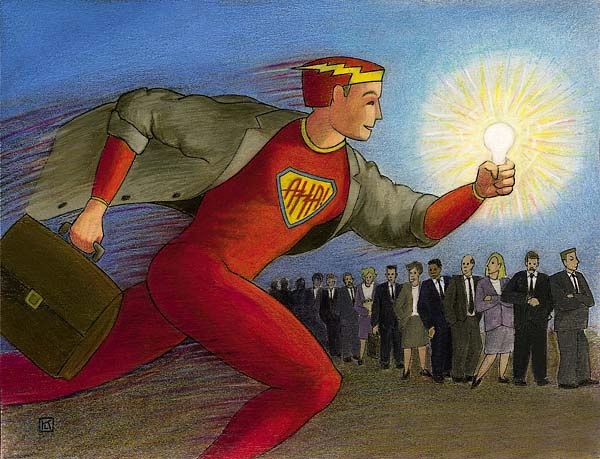
What enchants or delights us is sacred -- or could be sacred -- a clue that something significant is knocking on our door. Indeed, if we are willing to let fascination grow inside us, a kind of immaculate conception can occur, the illogical, miraculous becoming pregnant with possibility -- the bodily expression of the phenomenon that you are here to birth something extraordinary.
The idea is simply the first "waaaaaaah" to get you to notice.
What new idea is fascinating you? What new possibility has captured your attention? In what ways can you honor this inspiration today?
2. IMMERSE
Breakthrough ideas, like telemarketers or Jehovah's Witnesses, have a curious habit of showing up at odd times. And because they do, we're not always ready to receive them. To complicate matters, chances are good that when they do show up, we are multi-tracking our little tushies off -- checking email, microwaving dinner, or looking for our Smart Phone amidst the half-folded laundry. Not exactly the pre-conditions for breakthrough.
The alternative? Immersion -- the act of becoming completely involved or absorbed in something -- engrossed, enthralled, or preoccupied."
If you want to radically increase your odds of originating breakthrough ideas, you will need to immerse. Don't be a chicken, be a hen! Baby chicks break through the shell separating them from flight not because their mothers are rushing off to meetings on parenting skills, but because their mothers are immersed in the act of hatching. Mommy is sitting in one place for a looooooooong time. And baby chick is also sitting (curled up) in one place for a looooooooong time.
At Google, employees are given 20% of their time to immerse in projects that have nothing seemingly to do with their so-called day job. At 3M, it's 15%. W.L. Gore gives employees a half a day each week to immerse in projects that fascinate them.
Look at your calendar. Block out some time to focus on the development of your most inspired idea or venture. Unplug! Incubate! Hatch! Immerse!
3. TOLERATE AMBIGUITY
Breakthrough ideas are not always the result of a revolutionary Eureka moment. On the contrary, they are often the result of an evolutionary series of approximations or failed experiments. When Thomas Edison was asked how it felt to fail 800 times before coming up with tungsten as the filament for the light bulb, his answer was a revealing one.
"Fail?" he said. "I didn't fail once. I learned 800 times what didn't work."
Edison had the ability to tolerate ambiguity -- to "not know." Like most breakthrough thinkers, he had the ability to dwell in the grey zone. Confusion was not his enemy.
"Confusion," explained Henry Miller, "is simply a word we have invented for an order that is not yet understood."
If you are attempting to birth a breakthrough idea, get comfortable with discomfort. Give up your addiction to having all your ducks in a row, at least in the beginning of your discovery process. People may think you're a quack, but so what? Your chances of birthing a breakthrough idea (and result) exponentially increase the more you are able to tolerate ambiguity.
What new idea of yours is bubbling on the brink of breakthrough? In what ways can you stay with it, even if something in you is impatient for a breakthrough?

4. MAKE NEW CONNECTIONS
True creativity rarely happens in a vacuum. On the contrary it is the product of two or more variables connecting in a new way. It happens all of the time in nature. Water, for example, is really just the connection between hydrogen and oxygen. It happens in the human realm as well. Roller blading is nothing more than the connection between ice skating and roller skating. MTV? Nothing more than the connection between music and television. Drive in banking? Car + banking.
The originators of these breakthrough products didn't pull rabbits out of hats. All they did was see a new, intriguing (and potentially commercial) connection between already existing elements.
Why don't more of us make these kinds of connections? Because we usually stay within the confines of what we already know. We live in a box of our own creation -- whether that box be defined by our nationality, profession, concepts, cubicle, or astrological sign.
The more we are willing to get out of this box, the more likely it will be that powerful new connections will reveal themselves to us -- uncommon linkages between this, that, and the other thing -- kind of the way it was for Johannes Gutenberg when he noticed a previously undetected connection between the wine press and coin punch. And so the printing press was born.
Make three parallel lists of ten words. The first list? Nouns. The second list? Verbs. The third list? Adjectives. Then look for intriguing new connections between them.
5. FANTASIZE
In 1989, Gary Kasparov, the Soviet Union Grand Chess Master, played a two game match against "Deep Blue," the reigning supercomputer of the time. Kasparov won easily. When asked by the media what his competitive advantage was, he cited two things: intuition and the ability to fantasize. (And this, from a master strategic thinker!)
Few of us are ever encouraged to fantasize -- a behavior most commonly associated with children or perverts. And yet, fantasizing is exactly how many breakthrough ideas get their start -- by some maverick, flake, or dreamer entertaining the seemingly impossible.
I find it curious that business leaders want their employees to come up with fantastic ideas or solutions, but they don't want their employees to fantasize. And yet, the words "fantastic" and "fantasy" come from the same linguistic root, meaning to "use the imagination."
Think of a current challenge of yours. What would a fantasy solution to this challenge look like? What clues does this fantasy solution give you?
6. DEFINE THE RIGHT CHALLENGE
"It's not that they can't find the solution," said G.K. Chesterton, the renowned American philosopher and writer, "They can't find the problem!"
Translation? Most people, in their rush to figure things out, rarely spend enough time framing their challenge in a meaningful way. If they owned a GPS, they'd fail to take the time to program in their destination because they were so much into the hustle of getting out of town. Coming up with the right question is at least half of getting the right answer.
If you want a breakthrough idea, begin by coming up with a breakthrough question -- one that communicates the essence of what you're trying to create.
State your most inspired challenge or opportunity as a question beginning with words "How can I?" Then write it three different ways. Which is your real question?

7. LISTEN TO YOUR SUBCONSCIOUS
If you study the lives of people who have had Eureka moments, you'll note that their breakthroughs almost always came after extensive periods of intense, conscious effort. They worked, they struggled, they noodled, they gave up, they recommitted -- and then the breakthrough came. And often at unexpected moments. They weren't buying lottery tickets at their local deli, hoping to win a breakthrough fortune, they were digging for treasure in their own back yard.
Rene Descartes got the idea for the Scientific Method in a dream. Richard Wagner got the idea for Das Rhinegold while stepping onto a bus after long months of creative despair. Einstein used to conduct "thought experiments" (a fancy name for daydreaming) whenever he got stuck.
In other words, the conscious mind works overtime in an attempt to solve a problem or achieve a goal. Unable to come up with the breakthrough, the challenge gets turned over to the subconscious mind which then proceeds to figure it out in its own, sweet time.
Of course, all of this assumes that we are listening to the promptings of our subconscious mind.
This week, keep a log of your most inspired ideas, intuitions, and dreams. At the end of the week, review your log. See what insights come to you.
8. TAKE A BREAK
If you want a breakthrough, you will need to take a break. True innovators rarely follow the straight and narrow path. Not only do they march to a different drummer, they're often not even on the same playing field as most people.
Take Seymour Cray, for example, the legendary designer of high-speed computers. He used to divide his time between building the next generation super computer and digging an underground tunnel below his Chippewa Falls house. Cray's explanation of his tunnel digging behavior is consistent with the stories of many other creatives -- inner-directed, boundary-pushing people who understand the need to go off-line whenever they get stuck.
Bottom line, whenever they find themselves struggling with a thorny problem, they walk away from it for a while. They know, from years of experience, that more (i.e. obsession, analysis, effort) is often less (i.e. ideas, solutions, results).
Explained Cray, "I work for three hours and then get stumped. So I quit and go to work in the tunnel. It takes me an hour or so to dig four inches and put in the boards. You see, I'm up in the Wisconsin woods, and there are elves in the woods. So when they see me leave, they come back into my office and solve all the problems I'm having. Then I go up (to my lab) and work some more."
Next time you find yourself stuck on a thorny problem or project, walk away from it for a while. Stay conscious of new solutions coming to you during this down time.
9. NOTICE AND CHALLENGE PATTERNS AND TRENDS
There are many people these days who make their living from the pattern recognition business: futurists, meteorologists, air traffic controllers, and stock brokers just to name a few. And while their success rates may not always be 100%, it is clear that whatever success they enjoy is intimately tied to their ability to notice patterns and then interpret those patterns correctly for the rest of us.
The same holds true for breakthrough thinkers. The only difference? Breakthrough thinkers often hit the gravy train by challenging old patterns and then reconfiguring them in new ways.
"The act of creation," said Picasso, "is first of all an act of destruction."
"The genius," said American painter, Ben Shahn, "is merely the one able to detect the pattern amidst the confusion of details just a little sooner than the average man."
What trends in the marketplace most intrigues you? In what ways might these trends shift in the coming years -- and how might your most inspired idea be in sync with this imagined shift?

10. HANG OUT WITH A DIVERSE GROUP OF PEOPLE
Years ago Sony used to insist that their engineers spend at least 25% of their work time out of the office and mixing it up with people outside of the four walls of their industry. Keepers of the innovation flame at Sony understood that diverse inputs were essential to the origination and development of breakthrough ideas.
Unfortunately, most of us tend to stay within the intellectual ghettos of the familiar. We hang out with the same people day and night -- usually people who either agree with us, report to us or, through some indefinable act of karma, are joined to us at the hip.
If you want to increase your chances of getting a breakthrough idea, you will need to break the bonds of the familiar. Hang out with a different crowd. Go beyond the usual suspects. Seek the input of oddballs, mavericks, outcasts, or, at the very least, people outside your field. If you can let go of your need for comfort and agreement, you will find yourself catapulted into new ways of seeing, thinking, and acting -- all precursors to breakthrough ideas.
Make a list of ten people outside of your traditional posse that you can spend some time with this month.
11. BRAINSTORM
Breakthrough thinkers are often rugged individualists. They believe in their inalienable rights to think for themselves. They value their opinions, their perspectives, and their innate creativity. Their biggest fear is group think. All well and good.
But there is an important distinction to be made between group think and the phenomenon of inspired individuals getting together to spark each other's brilliance. Indeed, most great breakthroughs are more about inspired collaborations than they are about lone wolf genius.
Think Bill Gates and Paul Allen (Microsoft), Steve Jobs and Steve Wozniak (Apple), Sergey Brin and Larry Page (Google), David Filo and Jerry Yang (Yahoo), Watson and Crick (DNA), Lennon and McCartney (the Beatles), Hewlett & Packard.
All you need to do is frame a meaningful question, invite the right people, and facilitate the process for helping your think tank creatively jam. If you are not the right person to facilitate, you probably know someone who is. Ask them.
What is the topic of your next group brainstorm? Who will you invite? Who will facilitate? When?
12. LOOK FOR HAPPY ACCIDENTS
Breakthrough ideas are often less about the purposeful act of inventing new things that it is the art of noticing new things that happen accidentally -- those surprise moments when the answer is revealed for no particular reason.
The discovery of penicillin, for example, was the result of Alexander Fleming noting the formation of mold on the side of a Petri dish left unattended overnight. Vulcanized rubber was discovered in 1839 when Charles Goodyear accidentally dropped a lump of the polymer substance he was experimenting with onto his wife's cook stove.
Breakthroughs aren't always about inventions, but about the intervention required to notice something new, unexpected, and intriguing. For this to happen, you will need to let go of your expectations and assumptions and get curious. Give up being an expert. Let go of the past. See with new eyes.
What failed experiment or unexpected outcome might be interesting for you to reconsider?

13. USE CREATIVE THINKING TECHNIQUES
I live in the Northeast. In the Winter, it's common for old cars, especially on very cold mornings, not to start. When this happens, the best thing you can do is get a jump start. All you need are jumper cables and another car that's got its motor running.
Creative thinking techniques are like jumper cables. They spark ignition. They turn potential into kinetic energy. They get you going when you're stuck. If you're looking for a breakthrough idea, perhaps all you need is a jump start. That jump start can take many shapes. It can be a classic, creative thinking technique, of which there are many. It could be a "creative thinking coach" or a favorite book, or a quote. Ultimately, it doesn't matter what medium you choose, just as long as you choose something to get your motor running.
What is one creative thinking technique you might use the next time you need a jump start on the job?
14. SUSPEND LOGIC
Perhaps Einstein said it best when he declared: "Not everything that can be counted counts; and not everything that counts can be counted."
He was referring, of course, to the part of the human being that knows intuitively -- the part that is tuned in, connected, and innately creative. Kids live in this place. The rest of us just visit, preferring the left-brained world of rationality, logic, linearity, and analysis.
On some primal level, we're all from Missouri. We need proof. And while there is nothing inherently wrong with gathering data, the addiction to it subverts our ability to originate breakthrough ideas.
We know this. That's why we go to the movies, the pub, watch TV, read novels, dial 900 numbers, and daydream. We seek an altered state, one that is free of the normal gravity of daily life. That's why movie makers ask us to suspend disbelief. That's why brainstorm facilitators ask us to suspend judgment. That's why women (innately intuitive as they are) ask the men in their lives to stop being so damn practical for a change and actually feel something.
It is in this state of suspension that our innate creativity is free to percolate to the surface -- over, under and around all of the left brained guardians at the gate. And so... if you want to really birth a breakthrough idea, you too will need to enter into this state -- at least in the first phases of your new venture. Suspend judgment. Suspend evaluation. Suspend your addiction to the practical. What exists on the other side is fuel for the fire of your untapped creativity.
What can you do this week to suspend practicality, logic and rationality in service to birthing your big idea?
Posted by Mitch Ditkoff at 04:39 AM | Comments (1)
March 24, 2017Free Online Innovation and Creativity Summit 2017
Here's Nick Skillicorn introducing the upcoming, online Innovation and Creativity Summit 2017. I am happy to announce that I will be one of the 45 presenters. My topic? The power of storytelling to spark innovation. Cost? Zero. Zippo. Zilch. Click here to register. Summit begins on April 2.
MitchDitkoff.com
Storytelling at Work
Posted by Mitch Ditkoff at 10:53 AM | Comments (0)
March 07, 2017Innovation Begins with Fascination

I own a huge library of books on innovation. Mostly hardcover. The $27.95 variety with big indexes and forwards by people who make more money than I do. Some of these books are actually good. Most of them bore me. (I must confess I have a secret desire, whenever I enter a bookstore, to put glue between pages 187 & 188 in all of the new releases just to see if the publishers get any complaints).
The books attempt to describe the origins of innovation. You know, stuff like "the innate human impulse to find a better way" and "the imperative to find a competitive edge." That sort of thing.
Corporate-speak, in other words.
In my experience, the origin of innovation is fascination -- the state of being intensely interested in something. Enchanted. Captivated. Spellbound. Absorbed. What kids are naturally good at.
Kids and those mavericks at workwho make everyone nervous and running for their spreadsheets at the drop of a hat.A person who is fascinated does not need to be motivated... or managed... or "incentivized."
All that person needs is time, some resources, meaningful collaboration, and periodic reality checks from someone who understands what fascination is all about.
That's why Google gives its workforce 20% of their time to explore projects on their own. That's why 3M and W.L. Gore do something similar. They know that the root of innovation is fascination.
If you, or the people who report to you, are not currently in a state of fascination it's time to turn things around. That is, IF you want to spark some innovation.
How do you do this? For starters, try this simple exercise:
THE SEED OF FASCINATION
1. On a piece of paper, create three parallel headlines -- "What Fascinates Me," "People I Admire," and "What I Would Do If I Knew I Couldn't Fail."
2. Jot down at least five responses beneath each headline.
3. Look for intriguing, new connections between your responses. Any insights? Ahas?
4. Jot down your new ideas.
5. Circle your favorite idea and brainstorm it with a friend. Then pitch anyone who's influence can help you launchyour ideas for how to bring more fascinating projects into your work life.
Posted by Mitch Ditkoff at 11:24 PM | Comments (7)
October 07, 2016It All Began With Balls
Here's a fun, 7-minute story about Idea Champions big breakthrough soon after we started the business -- inspiration for YOU to do something different, provide your clients an EXPERIENCE, and have some fun along the way. "If you always do what you've always done, you'll always get what you've always got."
This story in the Huffington Post
Excerpted from this book
Posted by Mitch Ditkoff at 07:59 AM | Comments (0)
May 06, 2016A Very Cool Brainstorm Facilitation Training for People in the Fast Lane
Our brainstorm website
More about the training
What our clients say
Tell us more about your need
Our client list
VIDEO: The eight dimensions of a brainstorming session
Posted by Mitch Ditkoff at 12:49 PM | Comments (0)
March 02, 2016WOOF! Go Beyond Your Pet Ideas!

If your company runs brainstorming sessions, know this: too many of them have become veiled opportunities for people to trot out their pet ideas.
Because everyone is so ridiculously busy these days and real listening is at a premium, people use brainstorming sessions as a way to foist their pre-existing ideas on others.
And while this sometimes leads to results, it doesn't make best use of the opportunity a brainstorm session provides. The way around this phenomenon?
Give people a chance to express their pre-existing ideas at the beginning of a session. Clear the decks. Then use the rest of the time to explore the unknown. Woof! Woof!
High Velocity Brainstorming
Conducting Genius
Idea Champions
Posted by Mitch Ditkoff at 07:48 AM | Comments (2)
October 15, 2015Creativity Has a Lot to Do With Being Able to Connect Seemingly Unrelated Elements

If you google the phrase "definitions of creativity", guess how many references you will get? 33,600,000!. Given enough time and caffeine it will only be a matter of time before you find your favorite definition. But no matter what definition you decide is the best definition, there is still one, undeniable fact about "creativity" -- that one's ability to make new connections between seemingly unrelated elements is a big plus.

Like, for example, what sparked the idea for the printing press in the fertile mind of Johann Gutenberg who, somehow saw a connection between the coin punch and wine press -- a connection that eventually lead him to conceive the notion of moveable type.
If you have five minutes, click here to listen to Idea Champions Co-founder and President, Mitch Ditkoff, elaborate on this under-appreciated phenomenon Then try it out, on your own, by clicking the link below.
A simple way to do this online
Idea Champions mothership
100 way to be more creative on the job
Let's Go Mets!
Posted by Mitch Ditkoff at 01:00 AM | Comments (0)
September 15, 2015The Art of Sparking Innovation
When my mother was alive, she told me she had no idea what I did for a living. Around the canasta table, she would tell her friends I was a "motivational speaker", no matter how many times I explained what I actually did. The slide show below is dedicated to her and to YOU, too -- especially if you're wondering what the heck goes on in one of Idea Champions' innovation-sparking workshops. Best to view full screen.
Posted by Mitch Ditkoff at 05:18 PM | Comments (0)
September 04, 2015HOW TO MAXIMIZE IDEA POWER FOR FREE: A 3-Minute Video Tutorial

Need powerful, new ideas to grow your business, solve a problem, or find a better way? Don't want to go to yet another meeting to figure things out? Start paying attention to the ideas you are conceiving away from the workplace. And encourage others to do so, as well. Here's WHY and HOW.
Idea Champions
First, identify the problem
Innovation sparking keynotes
Free online creative thinking tool
Posted by Mitch Ditkoff at 10:34 AM | Comments (0)
July 17, 2015A Creative Tip from Einstein

One way to do so
Idea Champions
We talk our walk
Brainstorm Facilitation Training
Posted by Mitch Ditkoff at 04:30 PM | Comments (0)
July 02, 2015The Selective Attention Test
Posted by Mitch Ditkoff at 12:14 AM | Comments (0)
February 17, 2015On Being an Idea Champion

There's a reason why the expression "ideas are a dime a dozen" is so popular. Because they are. It's easy to get ideas. What's not so easy is championing ideas. And by "championing", I am referring to the kind of heroic commitment required to actually manifest those ideas. Here's my six-minute video elaboration on this often neglected topic. It's great that you have a new idea you care about. Wonderful. Now, ask yourself "What is it going to take for me to press through all the inevitable obstacles and bring this idea to life?"
Posted by Mitch Ditkoff at 07:34 AM | Comments (0)
January 24, 2015Radio Woodstock in the House!

We just received this very nice piece of feedback from the President of Radio Woodstock, Gary Chetkof.
"Idea Champions was a true partner in helping us untangle some of the issues we were struggling with. They were very easy to work with and the processes used were fun and creative and they worked splendidly. We were able to find out what the major obstacles were and our entire team worked together to find solutions. Everyone participated fully, and everyone now has much more clarity about how to better work together. We even have our new mission statement that you can see on our Facebook page! I wholeheartedly recommend Idea Champions to any business that wants to problem solve, brainstorm, or get their employees to work more harmoniously together."
Our teambuilding offerings
Yes, Idea Champions is based in Woodstock!
And this just in from Richard Fusco, Radio Woodstock's General Manager:
"As a small company where everyone wears many hats, being organized and all pulling in the same direction is key. Strangely, as a communications company, our internal communications were off. Val Vadeboncoeur of Idea Champions helped us with all three. His sessions were focused and fun. We all came away with a new unified working spirit."
Posted by Mitch Ditkoff at 11:34 AM | Comments (0)
January 08, 2015VIDEO: Ideas Are Scary
50 quotes on the power of ideas
Let us scare you
Scare yourselves
That big beautiful idea of yours
Posted by Mitch Ditkoff at 04:10 PM | Comments (0)
December 13, 2014BIG IDEA: Empowering the Homeless
What idea do you have to make a difference? What can YOU do to go beyond the obvious and really be of service to people in need? And if you work in an organization, how can you rally the troops to join you in the venture? Check out what 24-year old Veronika did. Genius!
Need to brainstorm it with others?
Just need a starter idea?
Posted by Mitch Ditkoff at 07:46 PM | Comments (0)
December 10, 2014Win a Subscription to Free the Genie

In an effort to ho, ho, ho the ground for innovation in 2015 (and in gratitude for YOU being a reader of Heart of Innovation), Idea Champions will be giving away five annual subscriptions to our Free the Genie creative thinking app. If you want to enter the raffle, simply send an email to info@ideachampions.com by 12/26 and include one New Year's resolution you are making for the coming year. If your name is selected, we'll send you the link to your free subscription on 12/31. Go for it! And happy holidays to you!
FreeTheGenie.com
Five ways to use Free the Genie
The non-virtual version
Posted by Mitch Ditkoff at 12:28 PM | Comments (0)
November 19, 2014The Carrot Clarinet
Posted by Mitch Ditkoff at 10:43 PM | Comments (0)
November 18, 2014CREATIVITY SECRET #8: Act As If!

Do you know what the opposite of a "professional" is? A "confessional." And, at the risk of being unprofessional, here's mine:
One of the great secrets to manifesting anything on planet Earth is to act as if -- to proceed in the spirit of already having succeeded -- or what Steven Covey refers to as "begin with the end in mind."
Why is this important? Because you already are what you profess to be, even if it's not apparent yet.
This state of mind, which is the polar opposite of doubt, could easily be construed to be some kind of con game. But it's not.
In a con game, the intention is to deceive -- to manipulate others by pretending to be something you're not.
When you act as if, you are simply being that which you already are, but hasn't manifested yet.

You are, as described in the introduction to Awake at the Wheel, the IDEA of something not yet fully embodied.
The intention, always, in the game of creation, is never to deceive, but to CONCEIVE -- to bring into being a positive, life-affirming outcome.
When you, with integrity, act CONFIDENTLY (from the Latin "con-fide" -- meaning "with faith"), you are not playing a "confidence game" -- you are jump starting the creative process.
Got it? Good.
WHAT YOU CAN DO
1. Suspend doubt for the moment.
2. Close your eyes and see your BIG IDEA as already manifested.
3. From that place, express yourself with authenticity, style, and a sense of humor.
Idea Champions
Posted by Mitch Ditkoff at 02:17 PM | Comments (5)
October 07, 2014THE SEED OF INNOVATION MOMENT: A 3-Minute Video Tutorial

If you are trying to spark a renaissance of innovation in your company by launching some kind of "innovation initiative", consider the fact that the seed of innovation is already available in every conversation that people are having. This 3-minute video tutorial dives in deeper.
The Seed of Innovation keynote
Create change agents
A more structured way to do this
Posted by Mitch Ditkoff at 03:51 PM | Comments (0)
September 15, 2014Is Peace the Innovation We Need the Most?

"Innovation" continues to be a hot topic in corporate circles these days -- a "competitive edge" organizations are increasingly attempting to hone so they can not only differentiate themselves from the competition, but survive in today's topsy turvy economy.
That being said, there are some forward thinking organizations out there who are going beyond the status quo and seriously asking themselves what they can do differently to not only be "socially responsible", but use their corporate clout to help various peace-themed global causes truly impact positive change.
If that describes your organization, please contact us. Idea Champions, in 2015, will be launching a new innovation-sparking service to help corporations, world wide, figure out HOW they can leverage their resources, bandwidth, and brainpower to foster peace and well-being in the world -- and still make a profit.
International Day of Peace in the Huffington Post
Idea Champions
Posted by Mitch Ditkoff at 02:35 PM | Comments (0)
August 02, 2014Unleashing Business Brilliance

That's what we do. And below are five ways we do it.
Conducting Genius
Engaging Innovation
Ingenious Leadership
What's the Problem?
Team Innovation
What our clients say
Posted by Mitch Ditkoff at 05:00 PM | Comments (0)
March 16, 2014How to Spark Wisdom in the Workplace
Dear Heart of Innovation Readers:
If you have received any value from this blog and would be interested in supporting my next, big project -- now launched as a GoFundMe campaign -- click here for a 3-minute video of me describing it and a written description of what the whole thing is all about -- a venture which includes the writing, publication, and promotion of a new book, Wisdom at Work, along with the launching of WISDOM CIRCLES in organizations around the world.
Whatever support you can provide is very much appreciated, Plus, you will be sent a copy of the book when it's published, if you want.
Mitch Ditkoff's GoFundMe campaign
Posted by Mitch Ditkoff at 09:35 AM | Comments (0)
February 19, 2014How to Open the Door to Innovation

There is no magic pill, but there is a key. And the key has a lot to do with creating a critical mass of savvy innovation catalysts and change agents who know how to open doors (and minds).
Posted by Mitch Ditkoff at 08:32 PM | Comments (0)
November 14, 2013One Reason Why Brainstorming Fails

Advertising executive Alex Osborn, frustrated by his employees' inability to come up with novel and creative ideas, invented the concept of brainstorming in the late 1930's. His 1953 book, Applied Imagination, described how to apply the concept in very simple terms. Osborne put forth two basic principles: Defer Judgment and Focus on Quantity.
These days, people attempting to lead ideation sessions are often mindful of the first principle, but they almost never remember the second. And this, quite simply is a big reason why most brainstorm sessions fail to produce even mediocre results.

At first glance, the quantity principle seems counter-intuitive. How can people come up with quality ideas, you might ask, by not striving for quality ideas?
But there's a method to this madness -- and it has to do with how our minds work and how we are trained to think.
If you are asked to come up with "good" and "novel" ideas in response to a problem, challenge or opportunity, whether you are working alone or with others, you will tend to aim for the best ideas possible. Makes sense, right?
However, in your striving for the best idea, you will tend to dismiss ideas you consider to be less-than-terrific.
When ideas pop into our minds, we tend to judge them immediately as too small, too big, too pedestrian, too unrealistic, too obvious, too goofy, too ordinary, too expensive, or too whatever.
It's as if the Red Queen is ensconced in our brains, shouting "off with his head!" at every idea that dares to speak up.
That's because human beings are conditioned to see what's wrong with an idea before seeing its possibilities.
It's like seeing a baby bird and judging it to be inadequate because it can't fly yet.
And this process is barely conscious. We dismiss our ideas so quickly that we often don't even notice they were thought of at all. "We've got nothing" becomes our mantra.
If you are generating ideas in a group and everyone is experiencing this phenomenon at the exact same time, the great silence will inevitably head its ugly rear. No one will be willing to share any of the ideas that have popped into their heads because their ideas will be self-censored -- deemed to be inadequate or flawed.
This is why "experts" are, usually, the worst brainstormers imaginable.

Educated, experienced, and cognizant of all the ins and outs of the topic being brainstormed, experts will immediately see the flaws -- not the possibilities -- killing promising new ideas with the effectiveness of a healthy immune system killing off a germ or virus.
This is why many forward thinking focus groups bring in children or non-experts to generate new ideas -- people whose idea immune systems are not yet fully developed.
Think about it for a moment. If "ordinary" ideas can be generated, articulated, announced, and captured then an interesting thing can happen. Other people can improve the ideas. One idea will lead to another and another and another, radically increasing the odds of something truly original manifesting.
This kind of magic, however, cannot happen if Osborn's principle of striving for quantity is ignored.
Think of Osborn's dual principles as two sides of the same coin.
Defer judgment postpones the act of criticizing ideas as they are generated. Focusing on quantity helps us defer our tendency to judge our ideas as they are conceived.
Not unlike the proverbial coin, if you don't have both sides, "you've got nothing."
-- Val Vadeboncoeur
Idea Champions
Virtual Brainstorm Training
High Velocity Brainstorming
Posted by Mitch Ditkoff at 09:00 PM | Comments (1)
October 22, 2013Look to Nature for a Creative Breakthrough

Leonardo DaVinci got his idea for the airplane by watching birds in flight. The creators of Kung Fu developed many of their techniques by watching animals fight. The pharmaceutical industry develops many of its "miracle cures" by studying the natural healing properties of herbs and plants.
Bottom line, nature is a great source of breakthrough ideas.
The secret for meeting your biggest challenge, in fact, may have already been worked out thousands of years ago by a cockroach.
THE TECHNIQUE
1. Frame your challenge as a question that begins with "How can I"
2. Everywhere you go today, notice how nature "gets things done." (i.e. bee hives, ants, sunflowers, etc.)
3. Make a connection between the natural world and your challenge (i.e. "What can I learn about my challenge from an ant colony?")
Technique adapted from Awake at the Wheel
Photo: Ira Meyer
Testimonials
Reviews
Got questions?
Posted by Mitch Ditkoff at 02:15 AM | Comments (1)
January 18, 2013Getting Back Into Our Right Brains
The following is by Val Vadeboncoeur, Idea Champions' Director of Training.
"May God us keep from single vision & Newton's sleep." - William Blake
The prolific Chris Hedges has written a powerful, new piece for Truthdig entitled "We Need Free Thinkers or Society Will Shrivel Up and Die".
I'd like to expand on it.
We need prophets and, as my good friend Roberta, a devoted student of the Torah, remarked the other day -- a "prophet" is not someone who foretells the future -- a prophet is someone who speaks the Truth right here in the moment, saying what needs to be said, whether it's popular or not (and it usually isn't).
We have had some prophets in recent times: comedian George Carlin was a prophet, for example, and so was Bill Hicks.
They told us what needed to be said, but they made us laugh about it so we didn't stone them to death when they did. Maybe Chris Hedges is a prophet.
But, today, we lack people who can see the bigger picture and help us make sense of things because, in great part, we have cut ourselves off from an essential part of ourselves.
We have neglected half of our human inheritance. In fact, we have dismissed it, made it an orphan, and cast it into exile.
The human being is a creature of balance. That's why we get so elated when our child takes his/her first steps.
After being born, this is the most significant event in a human life. It means we are learning about the fundamental reality of being human. We are mastering balance.
With every step we take in our lives, there is a moment where we have to find our balance or fall down. Once mastered, we do this so elegantly that we don't even notice this remarkable skill, much like a cheetah doesn't know how breathtakingly fast it runs, or a bird doesn't know how beautifully it flies. It just does it.
Physical balance is only one small part of it.
We are always balancing some kind of duality -- a duality of left/right, good/bad, up/down, wet/dry, smooth/rough, fast/slow, rich/poor, light/dark, hot/cold, positive/negative, me/you, us/them, etc.
We are always dealing with the reality of opposites. We also have two arms, two legs, two eyes, two ears, two nostrils, two vocal cords, and two brains -- and that's what I want to talk about here.
We don't have one brain. We have two. And they're supposed to work in tandem, like a team of horses.
But our society has lost a critical balance between our two brains. We are overworking one horse and ignoring the other, so it starves to death.
Or to put it another way, instead of using our hammer to do what it is designed to do and our screwdriver to do what it's designed to do, we are trying to do everything with the hammer alone.
It is not the hammer's fault that it can't deal with the application and removal of screws. It is ours for expecting the hammer to be able to do this at all.
In terms of our two brains, commonly referred to as the left brain and the right brain, we are a left-brained biased culture -- and that bias is, in the final analysis, killing us and everything else on the planet.
When our body gets out of balance in some way, that's commonly referred to as "illness". When our minds are out of balance, that should be understood as "mental illness". Our culture, being out of balance in the use of our brains, is, in some sense, mentally ill.
Our left brain is the brain that sees the individual, detects differences, categorizes, measures, experiences time, and follows a single line of thought.
It's the brain that tells us when to cross the street safely, which product is the better buy, and which clothes we should wear that will best suit the day's weather.
It's the brain that's created Science, Mathematics, Logic, Reason, and all manner of technology. It sees "things" and can count, measure, divide, multiply and categorize those things.
It's specialty is isolation and singularity. It's useful and convincing. So useful and convincing, that we have completely identified with it.
When you ask people who they are, they usually respond in a way that indicates that the sum collection of the workings of their left brain is their identity.
The left brain, however, cannot prophesy because it cannot see beyond the material, physical realm. It doesn't even know that anything else but the material realm exists.
It cannot see how the individual things it can see might be connected in unexpected, non-logical, non-spatial, non-temporal ways.
It can't even imagine such things. The left brain cannot empathize, since it sees others as separate entities -- as objects "out there". It cannot have hunches. It cannot create a metaphor. It cannot see the whole, just the parts.
If it wants to know more about a cat, it kills the cat, dissects the cat, takes out and measures all the parts of the cat, and then feels as if it understands what a cat is. It doesn't even entertain the idea that a better way to know what a cat is might be to live with a cat, watch the cat, and empathize with the cat -- an approach that has the additional benefit of still having a cat when all is said and done.
Those qualities of connectivity and wholeness and warmth all belong to the kingdom of the right brain.
The right brain has insights and can imagine what is not yet manifest. It can be inspired. It can connect with the heart so it can feel and experience joy or sadness and the entire range of emotion.
It can put this experience of connectivity and emotion into the language of music and form and movement. It can see possibility and the road not taken. It is somewhat magical, it is now (not burdened by a past or worried about a future), and it is what we often refer to as "love".
As a society, we have rejected the genius of the right brain and we are suffering this imbalance every single day in a myriad of ways.
We suffer with psychological isolation and drug addiction. We suffer when quantity trumps quality in our food, our sex lives, and our education. We suffer when we create extremes of wealth, health, and value that cause tensions in our society that explode into violence.
We suffer when we scapegoat people, and create fear-inducing enemies and bogeymen that we try to destroy -- creating war, injustice and chaos. We suffer when we exploit our planet, and our fellow living creatures, for profit, without realizing that we are destroying our own lifeline -- that we are cutting off the very branch we are sitting on.
It's way past the time when we have to recognize our full humanity and start paying a whole lot more attention to our ignored and belittled magical right brain.
We are suffering unnecessarily because we are not in balance with our own true nature.
We are the "thinking creature" only using half of our thinking ability, and it's not even the better half, in my opinion.
We are like the cheetah using only two of its four legs to run, or a bird trying to fly by flapping only one wing.
Is this prophecy? I don't know, but what I do know is that we need to find our balance in our thinking -- and soon -- or we will all fall down.
That's the bad news.
The good news is that we are designed to do exactly that.
Posted by Mitch Ditkoff at 10:11 PM | Comments (0)
December 13, 2012What's Next After Twitter
This just in! Twitter is dead.
Or if not dead, dying. Or if not dying, passe. It's time has come and gone.
Industry experts agree. There is now a way more streamlined option available to you. Find out here -- noted in my most recent Huffington Post article.
12/12 is the Pope's first day on Twitter.
Idea Champions
Posted by Mitch Ditkoff at 12:07 PM | Comments (0)
November 21, 2012The Top Ten Reasons Why The Top Ten Reasons Don't Matter
I'm sure you are a reasonable person -- thoughtful, analytical, and rational. Nothing wrong with that now, is there? Indeed, these very popular mental faculties can come in handy. But there is something beyond them that needs more breathing space in your life. Reason, no matter how reasonable,
can only take you so far. Anyway, here's my fun list, on the Huffington Post, of why we need to go beyond reason.
Idea Champions
Keynote presentations
Unreasonable cards
Posted by Mitch Ditkoff at 01:36 AM | Comments (0)
November 09, 201250 Awesome Quotes on Risk Taking
Is it time
to try
something new?
Get out of
your comfort zone?
Take a new step
or leap?
Feeling
a little queasy?
Need some
inspiration
to go beyond
the status quo?
Here's the ticket.
50 quotes on risk taking,
my latest piece
on Huffington Post.
Posted by Mitch Ditkoff at 11:05 AM | Comments (0)
August 10, 2012Web Workshops from Idea Champions
Here's a 3minute video overview of Idea Champions newest service -- Web Workshops -- highly engaging 60-minute tutorials to help your workforce raise the bar for innovation, collaboration, and communication.
Posted by Mitch Ditkoff at 04:11 PM | Comments (0)
July 27, 2012Creative Thinking Webinars for People Who Work in Corporations
40-minute overview of Idea Champions' newly launched series of creative thinking webinars (aka "Web Workshops") -- a simple, cost-effective way to spark brilliance and breakthrough in your organization.
Creative thinking web workshops
Click here if you want more info
Posted by Mitch Ditkoff at 04:38 AM | Comments (0)
July 17, 2012Rethinking The Role of a Manager
The root of the word "manager" comes from the same root as the words "manipulate" and "maneuver", meaning to "adapt or change something to suit one's purpose". Although these words may carry a pejorative meaning, there is nothing inherently wrong with them. Indeed, into each life a little manipulation and maneuvering must fall.
For example, if the door to your office gets stuck, a handyman might need to manipulate it to get it working again. If there is a log jam at the elevator, you might decide to maneuver around the crowd and take the stairs.
However, there is another kind of manipulation and maneuvering that is a problem -- when managers use their position to bend subordinates to their will.
While short-term gains may result, in the end the heart is taken out of people. Your staff may become good soldiers, but they will lose something far more important in the process -- their ability to think for themselves.
Unfortunately, ingenuity in many corporations has gone the way of the hula-hoop. "Intellectual capital" is the name of the game these days -- and it is the enlightened manager's duty to learn how to play. Only those companies will succeed whose people are empowered to think for themselves and respond creatively to the relentless change going on all around them.
Managers must make the shift from manipulators to manifesters. They must learn how to coach their people into increasingly higher states of creative thinking and creative doing. They must realize that the root of their organization's problem is not the economy, cycle time, strategy or outsourcing, but their own inability to tap into the power of their workforce's innate creativity.
Where does this empowerment start? First, by recognizing what power is: "the ability to do or act". And second, by realizing that power is intimately connected to ideas.
Most managers, unfortunately, perceive new ideas as problems -- especially if the ideas are not their own. More often than not, managers don't pay enough attention to the ideas of the people around them. They say they want innovation. They say they want "their people" to do something different. But they do precious little to support their subordinates in their efforts to do so. More commonly, they foist their own ideas on others and can't figure out why things aren't happening faster.
That's not how change happens. If people are only acting out somebody else's ideas, it's only a matter of time before they feel discounted, disempowered and just plain dissed. People are more than hired hands; they are hired minds and hearts, as well.
Let's start with the basics. Everything you see around you began as an idea. The computer. The stapler. The paperclip, the microchip and the chocolate chip. All of these began as an idea within someone's fevered imagination.
The originators of these ideas were on fire. Did they have to be "managed?" No way. In fact, if they had a manager, he or she would have done well to get out of the way.
If you want to empower people, honor their ideas. Give them room to challenge the status quo. Give them room to move -- and, by extension, move mountains.
Who has the power in an organization? The people who are allowed to think for themselves and then act on their ideas! Who doesn't have power? The people who have to continually check-in with others.
Think about it. The arrival of a new idea is typically accompanied by a wonderful feeling of upliftment and excitement -- even intoxication. It's inspiring to have a new idea, to intuit a new way of getting the job done. Not only does this new idea have the potential to bring value to the company, it temporarily frees the idea originator from their normal habits of thinking. A sixth sense takes over, releasing the individual from the gravity of status quo thinking.
In this mindset, the idea originator is transported to a more expansive realm of possibility. All bets are off. The sky's the limit. All assumptions are seen for what they are -- limited beliefs with a history, but no future.
If you are a manager, you want people in this state of mind. It is not a problem. It is not the shirking of responsibility. It is not a waste of time. On the contrary, it's the first indicator that you are establishing a company culture that is conducive to innovation.
This is not to say, of course, that you have to fund every idea that comes your way. On some level, ideas are a dime a dozen -- and only a handful of them are ever going to amount to much. But if you treat all ideas as if they are worthless, you will never find the priceless ones.
You, as a manager, want to increase the number of new ideas being pitched to you. You want to create an environment where new ideas are popping all the time. If you do, old problems and ineffective ways of doing things will begin dissolving. This is the hallmark of an innovative organization -- a place where everyone is encouraged and empowered to think creatively. Within this kind of environment managers become coaches, not gatekeepers.
It's one thing to tell people "you want their ideas", it's quite another to create the kind of environment that makes this rhetoric real.
How does a manager do this? First, by expressing a lot of positive regard. Get interested! Pay attention! Be present to the moment! This is not so much a technique as it is a state of mind. If your head is always filled with your own thoughts and ideas, there won't be any room left to entertain those of others. It's a law of physics. Two things cannot occupy the same place at the same time.
Your willingness to sit up and take notice needs to be just as strong as if a customer were to call and complain. If possible, drop what you're doing, focus all of your attention on the idea generator, take a deep breath, and begin a series of questions that demonstrate your interest. If you cannot drop what you are doing, schedule some time -- as soon as possible -- for the idea originator to pitch you.
And whether the pitch is now or later, your response -- in the form of exploratory questions -- needs to be as genuine as possible. Consider some of the following openers:
* "That sounds interesting. Can you tell me more?"
* "What excites you the most about this idea?"
* "What is the essence of your idea - the core principle?"
* "How do you imagine your idea will benefit others?"
* "In what ways does your idea fit with our strategic vision?"
* "What information do you still need?"
* "Is there anything similar to your idea on the market?
* "What support do you need from me?"
Most of us, however, are so wrapped up in our own ideas that we rarely take the time to listen to others. Your subordinates know this and, consequently, rarely share their ideas with you.
But it doesn't have to be this way. And it won't necessarily require a lot of time on your part. Some time, yes. But not as much as you might think. Choose not to listen and you will end up frantically spending a lot more time down the road asking people for their ideas about how to save your business from imminent collapse. By that time, however, it will be too late. Your workforce will have already tuned you out.
How can you make more time to listen to the ideas of your direct reports and teammates?
Posted by Mitch Ditkoff at 07:14 AM | Comments (0)
June 12, 2012What You Can Learn from WC Fields
WC Fields was always an exceptionally gifted performer. But some of his most unforgettable performances took place off-camera.
Like most actors in the start of their career, Fields found himself a little short of cash. A problem? Not for him.
The non-traditional Mr. Fields simply created a "Blue Ocean" job for himself in Atlantic City, one summer, as a professional drowner.
Here's how it worked:
Several times a day, Fields would swim out to sea, pretend to be drowning, and then be "rescued" by one of his accomplices, the lifeguard.
Invariably, a large crowd would gather on the beach as the no longer struggling actor was "resuscitated."
Once it was clear that this poor fellow was going to live, the suddenly relieved crowd would turn to Field's third accomplice, the hot dog vendor, (who just happened to be standing nearby) and treat themselves to an "I'm-so-glad-he's-alive" snack.
At the end of each water-logged day, Fields would split the take with his buddies -- the lifeguard and the hot dog vendor.
Brilliant!
Now, I'm not suggesting that you do anything to deceive your customers. Not at all.
But what I AM suggesting is that you take a fresh look at what you might do differently to get an extraordinary result.
Is there a new risk you need to take? An experiment you need to try? A non-traditional collaboration to enter into?
If your product, service, or venture is drowning, what can you do to resuscitate it?
My company, Idea Champions, once got a sizable contract from AT&T by teaching the Director of Training and Development how to juggle in five minutes -- something he'd been trying to learn for 25 years.
That's what I'm talking about: a new approach, a different twist, a non-traditional angle that will spark extraordinary results.
So... what is it?
Idea Champions
Our webinars
Innovation Kits
Posted by Mitch Ditkoff at 11:49 PM | Comments (0)
May 08, 2012Creating Time to Innovate

On Thursday May 17th, I will be delivering a live webinar on Fostering a Culture of Innovation. The first 50 people to sign up get half off, so register now!
During the past few years I've noticed a curious paradox heading its ugly rear among business leaders tooting the horn for innovation.
On one hand they want the rank and file to step up to the plate and own the effort to innovate.
On the other hand, they are unwilling to grant the people they are exhorting any more TIME to innovate.
Somehow, magically, they expect aspiring innovators to not only generate game-changing ideas in their spare time, but do all the research, data collection, business case building, piloting, project management, idea development, testing, report generation, and troubleshooting in between their other assignments.
Tooth fairy alert!
This is not the way it happens, folks! Not only is this approach unreasonable, it's unfair, unbalanced, and unworkable.
You cannot shoehorn game-changing innovation projects into the already overcommitted schedules of your overworked workforce.
If you do, it won't be innovation you'll get, only half-finished projects and a whole lot of cranky people complaining to you in between yet another unnecessary meeting.
Oh sure, there are always a few who will find a way, via skunkworks and caffeine, to find the time... but for the most part, organizations are painting their people into a corner.
Aspiring innovators don't need pep talks. They need TIME. Time to think. And time to dream. Time to collaborate. And time to plan. Time to pilot. And time to test. Time to tinker. And time to tinker again.

That's why Google gives its engineers 20% of their time to work on projects not immediately connected to its core business. That's why W.L. Gore gives its workforce a half day a week to follow their fascinations. That's why Corel instituted it's virtual garage program.
"Dig where the oil is," Edward deBono once said. Indeed! And where is the oil? Right beneath the feet of each and every employee who is fascinated by the work they do, aligned with their company's mission, and given enough time to make magic happen.
Need proof? 50% of Google's newly launched features were birthed during this so-called "free time". -- midwived by engineers, programmers, and other assorted wizards happily following their muse.
The fear? If you give people "freedom" they'll end up playing video games and taking 3-hour lunches. Alas, when fear takes over, folks, (the same fear Peter Drucker asked us all many years ago to remove from the workplace), vision is supplanted by supervision and all his micromanaging cousins.
Time to innovate is not time wasted. It is time invested.
Freedom does not necessarily lead to anarchy. It can lead to breakthrough just as easily.
Remember, organizations do not innovate. People do. And people need time to innovate. Time = freedom. Freedom to choose. Freedom to explore. Freedom to express. And yes, even freedom to "fail."
If you've hired the right people, communicated a compelling vision, and established the kind of culture that brings out the best in a human being, you are 80% there.
Now all you need to do is find a way to give your people the time they need to innovate.
For more of our wisdom on innovation, creative thinking, and becoming the best company you can be, check out our newly launched webinars at www.ideachampionsuniversity.com!
Posted by Mitch Ditkoff at 12:36 AM | Comments (1)
April 10, 2012Manifest Your Big Idea By Friday
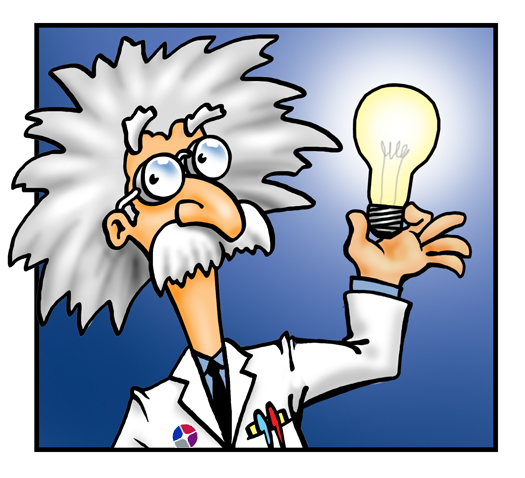
On April 11th (double April Fool's Day?), I will be delivering a 60-minute webinar to any earthling with an internet connection and a pressing need to manifest one of their BIG IDEAS.
I am offering a 50% discount to dyslexics, Buddhists, vegetarians, Republicans, Democrats, fans of James Taylor, or anyone who has ever wondered what kind of companies hire Idea Champions.
Posted by Mitch Ditkoff at 11:51 PM | Comments (0)
April 01, 2012Our World Wide Webinatrix Speaks!

The writers of this blog are excited, thrilled, and tickled to announce the launching of a entirely new service to the known universe: Webinars powered by Idea Champions University.
Having spent the past 25 years delivering a wide variety of innovation-sparking workshops, trainings, meetings, conferences, and consulting interventions to forward thinking organizations everywhere, we've decided to let go of our addiction to Frequent Flyer miles and go virtual.
Our new venture began with a simple question: "How can we have the biggest impact on the most amount of people in a cost-effective, highly engaging, low carbon footprint way?"
The answer? Build a webinar curriculum and deliver our services online.
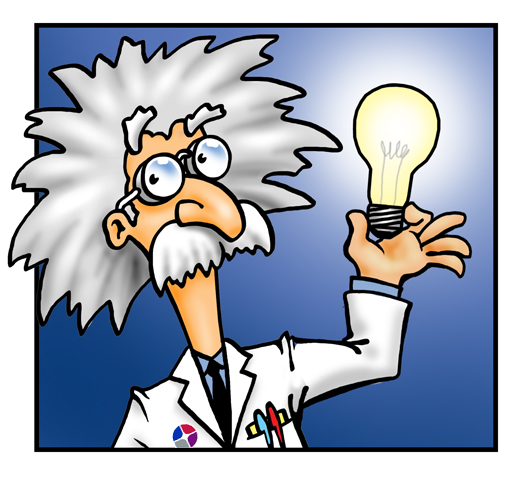
Which is exactly what we've done and will continue to do as long as the need in the marketplace exists.
Bottom line, if you're looking for a better way to build the core competency of innovation, you've come to the right place.
No airfare required. No cabs. No sending your people to overpriced hotels and wondering whose gonna cover for them while they're eating muffins and collecting one more three-ring binder they will never read.
Operators are not standing by. But our website is. And so is our integrity -- the collective mojo we've built for the past 25 years with some of the finest organizations in the world.
So visit us online to learn more about what we're offering. And while you're at it, feel free to register for one of our upcoming open-enrollment webinars -- a great way to kick our virtual tires.

If you are one of the first 50 people to register, you'll receive a 50% discount and a free annual subscription to our highly regarded online Free the Genie app.
If you'd rather schedule a group webinar (for up to 100 people), contact Sarah Jacob, our World Wide Webinatrix.
She means business.
Posted by Mitch Ditkoff at 01:48 AM | Comments (0)
February 24, 2012Creative Thinking Technique #6
KIDDING AROUND
Some years ago, as the story goes, a large truck got stuck in a New York City tunnel. (Apparently the driver did not notice the maximum height sign and wedged his vehicle against the roof of the tunnel.)
Traffic backed up for miles while angry motorists honked their horns and waited impatiently for police to arrive.
Just as the authorities were about to weld the top off the truck, a five-year old girl, watching from the backseat of her parents' car, calmly asked why the grown ups didn't just let some air out of the tires to lower the height of the truck so it could continue through the tunnel.
Her father, tickled by his daughter's suggestion, got out of his car and shared the idea with the powers that be. Problem solved.
THE TECHNIQUE
1. Think of a challenge you have been struggling with.
2. Present it to a child.
3. Listen carefully to their suggestions.
4. Even if no brilliant ideas emerge, look for the wisdom hidden within their most interesting approach.
PS: Psychologists claim that a human being is most creative at the age of five.
Idea Champions
Excerpted from Awake at the Wheel
Posted by Mitch Ditkoff at 07:51 PM | Comments (3)
February 18, 2012The Romance of Creativity
If you are trying to bring something new into the world, know this:
The creative process is very much like a relationship.
And like most relationships, it usually begins with fascination -- that curious state of mind that keeps you spellbound, charmed, and aroused.
Whenever someone gets a new idea, a kind of romance begins.
For many of us, just thinking about a new idea is an aphrodisiac. It turns us on, psyches us up, and otherwise makes it hard to eat, sleep, or obsess about cash flow.
While some people involved in a new relationship are able to sustain this excitement for months, most of us are less fortunate. It's the rare person who knows how to savor and expand upon this feeling for years.
After the intoxication of the initial encounter wears off, a less-than-incredible reality sets in.
Where once we saw only beauty, now we see blemishes.
To make matters worse, a werid kind performance anxiety enters the picture.
"Will I be good enough to achieve my goal?" we ask. "Do I have what it takes?"
Call it doubt if you like, but any way you slice it, the honeymoon is over.
What follows is a painful period of re-evaluation.
Long-buried fears of being consumed by the "other" surface, driving us into withdrawal. Instead of enjoying the outpouring of creative energy that accompanies a new idea, we study it. We dissect about it. We doubt it. Anything but let go to it.
Before you know it, the approach/avoidance game is upon us. On Monday we're totally absorbed in our new venture. On Friday, we're sure it's a waste of time.
The plot soon thickens.
Instead of maintaining our commitment to our HOT new idea, we begin having flings.
We flirt with other ideas, other possibilities, other new loves. We get into everything and anything -- whatever it takes not to sustain our ongoing relationship with our original inspiration.
Is there any hope?
Yes, there is. And something a lot more powerful than hope -- awareness.
Simply by being aware of the mind games you play will go a long way towards making magic happen.
To begin with, understand that all romances, no matter how inspiring, are temporary. The trivial ones end. The good ones mature, often growing into committed relationships -- even marriages.
If you are serious about your current hot idea, be willing to get closer to it. Be willing to go from the romance stage to an intimate relationship.
Understand what the creative process is -- an impossible-to-deny encounter with yourself -- your fears, your power, your vision, and what drives you to play the game of life.
Know that you will have your falling out periods and your disagreements. Know that you will sometimes feel like a fraud. And know that the fuel for many creative breakthroughs has not only been passion, purpose, and power, but confusion, conflict, and collapse.
It's normal. It's human. It's part of the process.
Above all, do whatever it takes to put the elation back into your relationship to creativity.
Illustration
Photo
Photo
Idea Champions
Awake at the Wheel
Posted by Mitch Ditkoff at 07:09 AM | Comments (1)
February 07, 2012Creative Thinking Technique #5

THE THIRD EYE OF THE STORM
At the center of every storm is total stillness. No matter how much swirling, flooding, and high winds are happening on the periphery, at the core of every storm is complete quiet.
The same holds true for the creative process.
At the edges of your Big Idea, there is a great swirling: bills to pay, ovens to clean, cars to repair -- the kind of stuff that can easily occupy all your time and attention. That is, if you let it.
A true innovator will find a way to deal with the high winds and still have enough time to hatch their big idea. And they will do so in a way that does not judge the stuff on the seeming "periphery" to be any less important than the quiet at the center of the storm.
THE TECHNIQUE
1. Make a list of your three biggest responsibilities.
2. Create a plan for handling them. Today.
3. Whenever one of these responsibilities competes with time you have to develop your Big Idea, take a few, deep breaths. Remember how lucky you are to be alive.
4. Acknowledge the peripheral task that needs to be done. Acknowledge the person who is reminding you to do it. Remember how lucky you are to be alive.
5. As you begin handling your responsibilities, remain at the center of the storm, concentrating on your breathing with the full realization that you will be returning to your "creative space" at just the right time.
6. Stop bitching and moaning. It's a waste of time.
Idea Champions
Excerpted from Awake at the Wheel
Posted by Mitch Ditkoff at 10:54 PM | Comments (0)
January 29, 2012Creative Thinking Technique #3
THE EMBEDDED REPORTER
There is a state of mind psychologists have dubbed the hypnopompic state that is a rich source of inspiration and fresh ideas.
In this state, most often associated with the first few minutes upon waking, the analytical mind is at bay and a fuzzier logic prevails.
It is as if a portal opens between worlds and we gain greater access to the subconscious part of mind where brilliance, insight, and expanded perception often reside.
Explained Victor Hugo, "There is visible labor, and there is an invisible labor."
In the hypnopompic state, invisible labor rules the day.
THE TECHNIQUE
1. When you wake up, don't get out of bed.
2. Just lay there.
3. Don't speak. Don't think. Don't move.
4. Let dreams, images, and feelings come to you.
5. Surf them. Then write them down.
Idea Champions
Photo
Excerpted from Awake at the Wheel
More about the book
Posted by Mitch Ditkoff at 06:02 AM | Comments (1)
January 27, 2012Creative Thinking Technique #2
DREAM CATCHING
Many great breakthroughs have come in dreams.
Rene Descartes got the concept for the Scientific Method in a dream. Elias Howe came up with the final design for the lock stitch sewing machine in a dream. August Kekule arrived at the formulation of the Benzene molecule in a dream.
In the dream state, our subconscious mind arrives at solutions that our conscious mind is unlikely to discover no matter much it obsesses.
That's why Thomas Edison and Salvadore Dali used to take naps during the day.
Click the link below for a simple technique you can use to help remember your dreams...
The Technique:
1. Before you go to sleep tonight, bring to mind a question, challenge or opportunity you've been struggling with
2. As you fall asleep, stay focused on it
3. When you awake, write down your dream even if the dream makes no sense to you
4. Reflect on each element of the dream and see if you can make any connections to the project you are noodling on.
Illustration
Excerpted from Awake at the Wheel
Awake at the Wheel website
Idea Champions
Posted by Mitch Ditkoff at 01:00 PM | Comments (0)
January 26, 2012Creative Thinking Technique #1
This is the first in a series of 35 postings that describe simple techniques you can use to liberate your innate creativity.
1. WRITE ON!
Buddha, as the story goes, once said that human beings have 2,000 thoughts per second -- and that he had slowed his mind enough to be able to identify the last two.
Few of us are in Buddha's league. Our thoughts are often a blur, flying in under the radar -- great ideas mixed with odd bits about shoe sales, sex, and salad dressing.
Like unremembered dreams, our ideas come and go, having little or no effect on our lives. That's why you need a way to track and capture them. At the very least, the effort will give you the option of remembering them.
Cavemen recorded their ideas on the walls of their cave. You also need a way.
The Technique
1. Keep an idea notebook with you at all times
2. When an inspired idea comes to you, write it down
3. At the end of the day (or week), review your notebook, circling the ideas that sing to you
4. Look for connections between ideas and see if you can synthesize something new from their interplay.
Excerpted from Awake at the Wheel
Awake at the Wheel website
Idea Champions
Posted by Mitch Ditkoff at 01:00 AM | Comments (0)
January 14, 2012Want to Innovate? Start Here!
Failure is not what you think it is
Idea Champions
Thanks to Sarah Jacob for the heads up!
Posted by Mitch Ditkoff at 10:52 PM | Comments (0)
January 02, 2012Top Innovation Bloggers of 2011

Well, I've got good news and great news to share with you.
First the good news: I was just voted the #1 innovation blogger in the world in a contest sponsored by Innovation Excellence, the #1 innovation blog in the world.
Now the great news: 2012 is going to be an awesome year for you -- full of happiness, abundance, creativity, collaboration, community, fun, gratitude and, yes, innovation. That is, if you want it to be.
I'd like to take this moment to thank all of you who voted for me. (And by the way, for those of you who think that all I do is write about innovation, please know that this is just a sideline).
My real work is in the trenches...
I'd also like to acknowledge some amazing people who have inspired and encouraged me throughout the years.
These include Evelyne Pouget, Tim Gallwey, Prentiss Uchida, Seth Godin, Gary Hamel, Ben Zander, Roger van Oech, Guy Kawasaki, Erika Andersen, Rumi, Hafiz, Kabir, Morihei Ueshiba, the entire Idea Champions team, Joe and Eddie, Ron Brent, Phyllis Rosen, Joan Apter and, most of all, Prem Rawat (aka Maharaji).

I first heard about Prem Rawat when he was 13 (and I was 24). At that very young age, he came to America (from India) to bring a very powerful message of peace -- a message he doesn't just talk about, but helps people experience for themselves.
He is not the first to talk about this message. Nor will he be the last. But he is here and now -- helping thousands of people, from all walks of life, go beyond ideas to find their way to the source of peace within themselves.
His dedication, brilliance, love, and endless commitment to innovating is a great source of inspiration to me.
Posted by Mitch Ditkoff at 02:11 PM | Comments (2)
December 27, 2011The Selective Attention Test
Posted by Mitch Ditkoff at 05:13 PM | Comments (0)
December 21, 2011Water the Seed of Fascination
The reason why many of us do not get inspired ideas is because we are not inspired. The reason we are not inspired is because we do not follow our fascinations. The reason we do not follow our fascinations is because we judge them as impractical, irrelevant, or impossible.
And so it goes -- sometimes for an entire life.
The good news? This cycle can be reversed.
It begins by suspending judgment. It's followed by entertaining what fascinates you. It continues by getting inspired and then acting on the fruit of your inspiration.
WHAT TO DO
1. On a piece of paper, create three parallel headlines -- the first, "What Fascinates Me," the second, "People I Admire," and the third, "What I Would Do If I Had More Time."
2. Jot down at least five responses under each headline.
3. Look for connections between your various responses.
4. Write down your inspired ideas. Then circle your favorite.
Excerpted from Awake at the Wheel: Getting Your Great Ideas Rolling (in an uphill world).
Photo
Posted by Mitch Ditkoff at 11:19 PM | Comments (2)
December 16, 2011The Atlassian FedEx Day Goes Global

Atlassian is a very successful Australia-based software company founded in 2002. It has 400+ employees, with 125 of them in San Francisco.
It also has more than 17,000 satisfied clients including Google, Netflix, Facebook, Twitter, Skype, LinkedIn, Pixar, Adobe, Hulu, Salesforce, UPS, Nike, and Coca-Cola.
Atlassian's software helps companies organize their data, track it, collaborate about it, and detect/fix bugs in their software.
Yeah, I know... I had never heard of them before either.
But those days may soon be over. Atlassian is fast becoming famous not only for their popular software development tools, but also for their rapidly-spreading innovation creation playfully named "FedEx Day".
Very simply, FedEx Day is a 24-hour innovation immersion event that enables employees to brainstorm, prototype, and pitch their emerging innovations.
Why is it called "FedEx Day"? Because the goal of the 24-hour blitz is for participants to originate, develop, and deliver new products, new services, or business process improvements overnight.
FedEx Days typically begin on a Thursday afternoon at 2:00 pm and end with a spirited round of presentations delivered exactly 24 hours later.
The experience is energizing, empowering, and exciting -- with the company supplying pizza and beer (this DID originate in Australia, after all) for everyone on Thursday night.
The end result? Lots of useful and successful innovations that would not have materialized had employees been required to stick with their "day jobs."
Atlassian has been, internally, conducting FedEx Days (now done quarterly) since 2005. But this program is now spreading like a Charlie Sheen Twitter meme. Many other organizations, like Yahoo, Symantec, Flickr, Hasbro Toy, and the Mayo Clinic have all begun conducting their own versions of FedEx Day.
And, NOW, for the first time ever, Atlassian is offering to send their own FedExperts to one deserving company in order to help them conduct their own FedEx Day.
Explains Jonathan Nolen, one of Atlassian's FedExperts, "It's so exciting. The possibilities are endless. Everyone has great ideas and this gives them a way to unleash the power of those ideas. And it happens all over the organization. It's incredibly inspiring to see this happen in real time."
Atlassian's Annelise Reynolds agrees. "This is part of a new trend in business where companies are understanding the importance of engaging and energizing their employees. It works wonders for both the companies and their employees. The employees have fun and the companies get some great innovations."
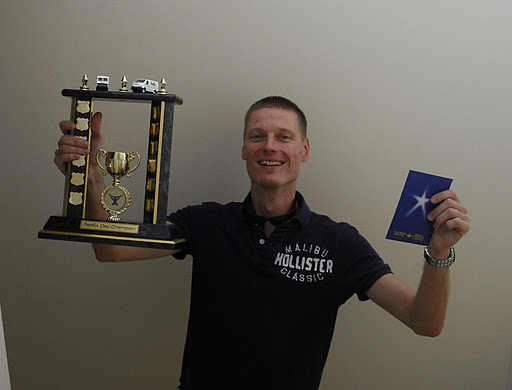
Interested? Want to enter the contest? Click here. Or here to find out what Dan Pink, author of Drive and A Whole New Mind has to say about it.
Entering is simple. All you need to do is fill out this entry form and make a convincing case for why YOUR company or department could use a 24-hour innovation blitz.
Deadline is December 21st, 10:00 PM Pacific Time! Good luck! And good on ya, mate!
- Val Vadeboncoeur
Idea Champions
Posted by Mitch Ditkoff at 07:21 PM | Comments (0)
December 09, 2011Free Your Genie Before 4:00 Today

Here is Idea Champions pre-Christmas, post Thanksgiving gift to you -- a two week free trial of our very cool, online Free the Genie app -- a simple, user-friendly, low-calorie, high bandwidth, fun, engaging, gluten-free way to stir your creative juices, tease out brilliance, generate breakthrough ideas, and jump start innovation.
The only thing it doesn't do, as far as we know, is make cappuccino or prove the existence of extraterrestrials. All you need is 7 minutes and a question that begins with "HOW CAN I?"
Read the review
Buy the deck
Stare at sushi
Posted by Mitch Ditkoff at 12:48 AM | Comments (0)
December 05, 2011Product Development Technique #14

Conventional wisdom has it that the best time to name a new product is after you create it. Unconventional wisdom has it the other way around: first you give your product a name, then you create it.
With this approach, the name -- instead of being the description of your creation -- becomes the catalyst for its existence.
The key is to come up with a compelling name -- one that intrigues, delights, and has embedded within it the kind of multiple meanings that stimulate you enough to decode them.
Let's use the topic of my book -- creativity -- as an example. If I was looking to invent new products to hawk in the back of the book, but had no clue what they were, I might start by generating some creativity-themed names -- and then work backwards.
CreativiTeas: Exotic teas that boost brainpower.
CreativiTees: T-shirts featuring photos of creative geniuses on the front and their inspiring quotes on the back.
CreativiTease: A strip poker card game in which players match famous quotes on creativity with the people who said them.
Invent some products that are sparked by these names:
Shower Power?
Chakra Chip Cookies?
Cheeses of Nazareth?
Sing Kong?
USING THE TOOL:
1. Make up a compelling name for something -- even if you don't know what that "something" is. HINT: Humor, double entendre, and spelling variations are good catalysts.
2. Now that you have a compelling name for an imaginary product, brainstorm what this something might be.
Posted by Mitch Ditkoff at 09:51 PM | Comments (0)
November 13, 2011Obvious to You, Amazing to Others
Derek Sivers, Founder of CD Baby, used to live one street away from me in Woodstock, NY. I saw him only once, walking on the road. Now here he is on YouTube. Yo, Derek! Thanks for this! So true...
Posted by Mitch Ditkoff at 12:01 AM | Comments (0)
July 11, 2011Where Good Ideas Come From
Posted by Mitch Ditkoff at 12:44 AM | Comments (4)
July 08, 2011Introducing Whatify

Whatify.org, a very cool online innovation magazine, has just published my Six Sides of the So-Called Box article (also, by the way, available as an interactive keynote, workshop, or cheese grater).
Check it out, along with a lot of other interesting articles by various mavericks, thought leaders, and unidentified flying consultants.
And while you're at it, here's a few simple things to noodle on before you die:
1. Who are you?
2. Why are you here?
3. How can you make your greatest contribution to mankind?
Six Sides on this blog
Need more time?
Posted by Mitch Ditkoff at 11:21 AM | Comments (0)
April 28, 2011How to Change Your Persona
Do you know why Halloween is such a popular holiday in America? Because people get permission to be somebody else for a night.
Wearing a costume makes it easier for people to think and act differently -- one the simplest ways to change perspective and open up bold, new possibilities.
And so, if you are feeling bound by old perceptions, declare today your own, personal Halloween.
Let go of who you think you are. Try on a different mask. Be someone else for a change.
The more you look at the world through the eyes of another, the easier it will be for you to go beyond "business as usual" and have a creative breakthrough.
In other words, ACT AS IF!
WHAT TO DO
1. Choose a new persona -- anyone who inspires or intrigues you.
2. Imagine you actually ARE this person.
3. Identify their approach to your challenge -- the gist of what he/she would do.
4. Using this gist as a clue, jot down a bunch of new ideas about what you might do differently.
This technique is one of 35 described in Awake at the Wheel.
Posted by Mitch Ditkoff at 09:56 PM | Comments (2)
April 14, 2011Beer and the Invention of the Wheel
You may not know it, but I wrote an award-winning book in 2008, Awake at the Wheel. It's a business fable about the creative process. Easy to read. Fun. A real support for aspiring innovators.
I'm guessing the caveman in the Bud Lite ad below would have found a better way of getting their beer to the party if they had read it.
But enough about me. Let's talk about YOU.
Do you have a creative venture that needs an infusion of mojo, inspiration, and clarity?
Yes? Good. Click. Buy.
Posted by Mitch Ditkoff at 02:22 PM | Comments (0)
April 04, 2011Getting Out of the Organizational Box

Last Thursday, I had an opportunity to be the keynote speaker at the Ethical Sourcing Forum, in NYC, a conference sponsored by Intertek, a world class organization dedicated to "helping customers improve performance, gain efficiencies in manufacturing and logistics, overcome market constraints, and reduce risk."
The topic? Sustainable Innovation. Or, more specifically, how people who work in large organizations can get out of the so-called "box".
After the keynote, I was approached by two very animated people from 3BL, a savvy media company specializing in corporate social responsibility, sustainability and cause marketing communications. Apparently, they liked what they heard and wanted to dig deeper -- on camera.
So, it was off to their make shift media center down the hall for an impromptu interview. Click here to watch the 7-minute video.
My innovation keynotes
My speaker's bureau
Posted by Mitch Ditkoff at 03:40 PM | Comments (1)
March 03, 2011What, Exactly, IS the Box?
"Innovation" is the holy grail for most organizations. Everyone wants it. Everyone talks about the need to "get out of the box" and do something different. But there's a huge gap between the rhetoric and the reality.
The reasons are many -- but the biggest reason is this: No one really knows what the so-called box really is.
And because we don't, we end up shadow boxing imaginary monsters -- coming up with untold processes, protocols, and pep talks that don't really get to the heart of the matter. Not a good idea.
So, dear aspiring innovator -- what do YOU think the box is?
Next week, in this space I will share my current understanding of the box, name all six sides -- and kick start the conversation of how you, your organization, and the rest of world can get out of it.
Posted by Mitch Ditkoff at 10:40 AM | Comments (0)
November 26, 2010Virtual Innovation Coaching
Aspiring innovators have a lot going for them -- big ideas, inspiration, and the willingness to work hard. What they usually don't have is time, meaningful feedback, and the knack for discovering elegant solutions on the fly.
Why? Because they tend to work alone.
Faced with the challenge of balancing right-brain thinking with the left-brain demands of monetizing the fruits of their labor, they are frequently stranded between two worlds -- the world of infinite possibility and the world of "getting the product out the door."
The result? Confusion, doubt, and brick walls...
Historically, aspiring innovators have had few options: 1) Struggle in obscurity; 2) Scramble for a collaborator; 3) Seek the council of (only occasionally available) friends, family, and colleagues.
With the extraordinary rise of the internet, however, a fourth option is now available -- a way for entrepreneurs, creative thinkers, and anyone with an inspired idea to get the support they need to increase their odds of success.
Think of this fourth option as a kind of "innovation insurance" -- a virtual network of skilled allies, advisors, and brainstorm partners with the time and expertise to help aspiring innovators get over the hump.
And so... I am happy to announce that Idea Champions has decided to launch this much-needed service by January 15th.
At this stage of the game, we're still tuning into the need. Which is why we're asking for three minutes of your time, now, to respond to our online poll . We want to know what you find compelling about our new venture.
If you want to be notified when The Power of Two launches in January, click here.
Until then, do your best to keep the flame alive. Honor your ideas. Make effort every day. And if you need a reminder, click here or here or here.
Posted by Mitch Ditkoff at 06:19 PM | Comments (0)
October 06, 2010True Blue Sky Thinking
In 1989, Gary Kasparov, the Soviet Union Grand Chess Master, played a two game match against "Deep Blue," the reigning supercomputer of the time. Kasparov won easily.
When asked by the media what his competitive advantage was, he cited two things: intuition and the ability to fantasize.
(And this from a master strategist!)
Few of us, in the workplace, are ever encouraged to fantasize -- a behavior most commonly associated with children, slackers, and flakes.
And yet, fantasizing is exactly how many breakthrough ideas get their start -- the act of some off-the-grid maverick entertaining the seemingly impossible...
HERE'S A SIMPLE WAY TO FIND SOME BLUE SKY
1. Make a wish for the successful resolution of your challenge (i.e. "I wish I had more time").
2. Extend your wish by making a wild wish (i.e. "I wish I didn"t have to work my regular job").
3. Extend your wild wish by thinking of a fantasy solution -- a seemingly impossible way to get a result (i.e. "a fairy godmother shows up at midnight to do my work").
4. Distill your fantasy solution down to a core principle (i.e. "I get more help" or "I outsource my responsibilities").
5. Using this principle as a clue, generate at least five new ideas for the successful resolution of your challenge.
Photo
Excerpted from Awake at the Wheel
Posted by Mitch Ditkoff at 11:43 PM | Comments (0)
August 12, 2010WOW! First Review of Free the Genie

Here is a wonderfully comprehensive review of Free the Genie (our new, online brainstorming tool), by Chuck Frey, of Innovation Tools -- one of the leading innovation portals on the web.
If you are looking for an engaging way to stir the creative juices, spark new ideas, and discover unique ways of approaching big challenges, this is your ticket.
And it only takes a few minutes...
To sign up for your free 10-day trial, click here. Or here. Or here.
Client testimonials about the producers of Free the Genie.
Posted by Mitch Ditkoff at 07:59 AM | Comments (0)
August 11, 201035 Creative Thinking Techniques

Those of us at Idea Champions have been designing and facilitating creative thinking sessions for a wide range of organizations since 1986.
We've worked with left-brained people, right-brained people, and air-brained people -- all of whom have been interested in "getting out of the box."
In the process of providing our service, one thing has continued to astound us: No one has any time, or more precisely -- thinks they have any time. And because they don't, the need to "cut to the chase" remains paramount.
Speed rules -- and along with it the desire for "tools and techniques."
Now, we have nothing against tools and techniques. They can be very helpful. Golf pros give them out all the time. But tools and techniques are never enough -- especially in the realm of creative thinking.
Can they be useful? Yes, they can -- in the same way that jumper cables can be useful if your car won't start. But first you need a car -- and after that, someplace to go! Without a car and a destination, jumper cables are just a meaningless prop.
If you are committed to birthing a BIG IDEA, first understand that the car is you and the engine that powers the car is your passion for bringing something new into the world.

Only when that is in place, will tools and techniques make sense.
Some of the methods described in Awake at the Wheel will be right up your alley. Some will not. Some are so common-sensical you'll think you could have invented them. Some are so non-sensical you'll dismiss them as trivial.
Don't worry about loving them all. You won't. Just find the ones that interest you and give them a shot -- whatever it takes to get those wheels inside you turning once again.
Two different parts of you will be activated by these methods: the subconscious and the conscious.
The sub-conscious tools will increase your receptivity to new ideas, helping you access the part of you that already knows. Using the subconscious tools will feel a bit like walking into a dark room. At first there will seem to be nothing to see. But after a while your eyes will adjust and you'll begin making sense of what is there.

The second set of tools is less about receptivity than proactivity.
This approach presumes it is possible to quicken creativity by purposefully shaking things up in various ways. Experimentation is an important part of this approach. Trial and error, too -- much in the same way that chemists mix and match elements in the hopes of synthesizing new discoveries.
Is there a perfect technique? No. Just like there's no perfect diet, place to live, or relationship. What works for you on Monday may not work for you on Sunday. What works for you in the morning may not work for you at night.
But that's what makes the world -- just like the wheel -- go round and round.
And that's why we offer you 35 different methods to choose from. Is there an organizing principle? Yes, there is. The tools fall into five categories:
1. INTEND: To have in mind as something to be done or brought about; to have a purpose or design.
2. ATTEND: To be present at; to take care of or wait upon; to listen and give heed to.
3. SUSPEND: To defer opinion or evaluation to a later occasion; to render temporarily void.
4. EXTEND: To stretch out; to place at full length; to enlarge the scope of or make more comprehensive.
5. CONNECT: To join or unite; to establish communication between; to associate, attach or place in relationship.
Buy the book here.
Read more about the book here.
Watch old Jews telling jokes here.
Get your Innovation Kit here
Discover Woodstock's most beautiful B&B here
Read about Mozart here
Check out one of my son's favorite online cartoons here.
Learn more about Spiro Agnew here
Take ten minutes to get a breakthrough idea here
Don't click anything on this line.
Play with our online Genie here
Read our entertaining FAQ here
Discover why most corporate innovation efforts fail here
Or call us at 845.679.1066 and learn more about how we can help you and your organization get out of the box, the lamp, AND the cave. "If not YOU, who? If not NOW, when?"
Posted by Mitch Ditkoff at 07:24 PM | Comments (1)
August 10, 2010Getting Down to the Business of Creativity
Here's a terrific article on creativity, based on the work of three Harvard researchers/professors.
According to Teresa Amabile's research, "inner work life" is one of the biggest determinants of creative output. In other words, a positive mood is a pre-condition for creativity in the workplace.
If you are attempting to establish a sustainable culture of innovation in your organization, you (and everyone else) would be well-served to do everything humanly possible to positively impact the mood (i.e. tone, feeling, atmosphere, vibe, spirit) of the environment in which you work.
And that begins, of course, with the individual.
When you treat people with respect, acknowledgment, and genuine positive reinforcement, you significantly increase the odds of creativity -- and by extension, innovation -- flourishing in your organization.
Common sense? For sure. But common sense is all too uncommon in most organizations these days. In our rush to produce, get an edge, and accomplish, we forget the most important thing -- and that is the quality of our interactions with others.
Posted by Mitch Ditkoff at 05:35 AM | Comments (0)
July 21, 2010Top 100 Amazon Reviewer Favorably Compares "Awake at the Wheel" to "Who Moved My Cheese?"

Nice review of my book from Thomas Duff, Top 100 Amazon reviewer:
Awake at the Wheel: Getting Your Great Ideas Rolling (in an Uphill World) can, in my opinion, be compared to the classic "Who Moved My Cheese?".
Ditkoff does for creativity what Johnson and Blanchard did for living with change... It gives the reader a short, humorous story loaded with meaning and concepts that hit the reader right where they live.
Ditkoff explores the world of ideas and creativity though the story of Og. Og is a caveman who spends more time thinking than the average Neanderthal.
He stumbles upon the concept of a circle, and becomes obsessed with what it could mean to the group. Of course, most of his fellow cavemen are more concerned about maintaining the status quo... hunting, eating, staying warm.
Og takes a journey to talk with a wise one, and from that trip the wheel is born.
But even then, others in his clan are more interested in shooting it down as something that will never work. But one person does figure out the practical application, and pretty soon everyone is "rolling along" with the greatest thing since dried mammoth...
I really did like this book.
Taking the concept of ideas and putting them in caveman terms freshens up what could be just another book on creativity.
At the end of the book are 35 "tools" you can use to spur your own idea machine, as well as how best to make sure these fleeting thoughts don't disappear like smoke from a campfire.
Like many companies have done with "Cheese", this should be a mass purchase, handed out toall employees, and then discussed in team meetings.
Those who are into this genre will love it, and the Neanderthals who are cynical will likely spend the 30 minutes or so it should take to read it.
And they might even come out of that experience as the new Og of your organization.
What others are saying about it.
Winner of Axiom Business Book Award: (scroll to category #22)
Posted by Mitch Ditkoff at 03:11 PM | Comments (0)
July 03, 2010INTENTION: The Root of Creativity
If creativity is the flower of a human life, then intention is the root.
Indeed, there are many bipeds among us who believe that without intention, there can be no creativity.
More than its second cousins -- hope, wish, dream, and desire -- intention is the ground from which creativity springs.
One of the main reasons why creativity is so flaccid in most people (and by extension, most organizations) is that there is very little intention -- and the intention that does exist is often a simulation of the real thing -- upwardly mobile fast trackers inheriting someone else's vision, strategy or idea, but not sufficiently in touch with their own reason for being to really break through...
And so, if you want to create something new and meaningful, you will need to get more deeply in touch with your intention.
The force. The mojo. What truly moves you.
Intention, of course, can take many forms: the intention to change, the intention to improve, the intention to manifest miracles.
Whatever form it takes, your effort will need to be more than mental. More than emotional, psychological, or astrological. It will need to be primal -- in the same way that the moon affects the tides.
Moon-howling intention.
Well then, what is moving you these days? What is in your bones? What is calling you from within?
(Excerpted from Awake at the Wheel)
Posted by Mitch Ditkoff at 02:19 AM | Comments (1)
February 21, 2010The Rise of the Innovation Ninjas
Every once in a while I come across a quote or excerpt from an article that I want to immediately post on the windshield of every client of mine. It cuts to the chase and lucidly states what I've been trying to say, in various Neanderthalic ways, all these many years.
Take Einstein for example: "Not everything that counts can be counted; and not everything that can be counted counts." Bingo! Bullseye! What a perfect way of explaining to a left-brained addicted world that metrics and analysis is not the only game in town.
And then there's Gary Hamel. He takes a bit more time than Albert to make his point, but hey, it's all relative isn't it? Check this out from the man behind one of my favorite business books of all time:
"Today, innovation is the buzzword du jour in virtually every company, but how many CEOs have put every employee through an intensive training program aimed at boosting the innovation skills of the rank and file? Sure companies have electronic suggestion boxes, slush funds for new ideas, elaborate pipeline management tools, and innovation awards -- but in the absence of a cadre of extensively trained and highly skilled innovators, much of the investment in these innovation enablers will simply be wasted."
"Imagine that you coaxed a keen, but woefully inexperienced golfer onto the first tee at Pebble Beach. After arming the tyro with the latest titanium driver, you challenge him to split the fairway with a monster drive. You promise the neophyte a $100 bonus every time he hits a long bomb that stays out of the rough, and another $100 for every hole where he manages to break par.
But what you don't do is this: You don't give him any instruction -- no books, no tips from Golf Digest, no Dave Pelz and Butch Harmon, no video feedback, and no time off to perfect his swing on the practice range. Given this scenario, how many 200-yard drives is our beginner likely to land in the fairway?
How long is he likely to stay avidly devoted to the task at hand? And what kind of return are you likely to get on the $2,000 you spent on a bag full of high tech clubs and the 450 bucks you shelled out for a tee time? The answers are: Not many, not long, and not much. And no one who knows anything about golf would ever set up such a half-assed contest.
"That's why I'm dumbfounded by the fact that so few executives have invested in the innovation skills of their frontline employees. The least charitable explanation for this mind-boggling oversight: senior managers subscribe to a sort of innovation apartheid.
They believe that a few blessed souls are genetically equipped to be creative, while everyone else is a dullard, unable to come up with anything more exciting than spiritless suggestions for Six Sigma improvements.
A more charitable reading: CEOs and corporate HR leaders simply don't know how to turn on the innovation genes that are found in every human being.
"Obviously, you can't teach someone to be an innovator unless you know where game-changing ideas come from. In other words, you need a theory of innovation -- like Ben Hogan's theory of the golf swing.
This is why, a few years back, I and several colleagues analyzed more than a hundred cases of business innovation. Our goal: to understand why some individuals, at certain points in time, are able to see opportunities that are invisible to everyone else. Here, in a pistachio-sized shell, is what we learned:
Successful innovators have ways of seeing the world that throw new opportunities into sharp relief. They have developed, usually by accident, a set of perceptual "lenses" that allow them to pierce the fog of "what is" in order to see the promise of "what could be." How? By paying close attention to four things that usually go unnoticed:"
1. Unchallenged orthodoxies -- the widely held industry beliefs that blind incumbents to new opportunities.
2. Under-leveraged competencies -- the "invisible" assets and competencies, locked up in moribund businesses, that can be repurposed as new growth platforms.
3. Under-appreciated trends -- the nascent discontinunities that can be harnessed to reinvigorate old business models and create new ones."
4. Unarticulated needs -- the frustrations and inconveniences that customers take for granted, and industry stalwarts have thus far failed to address."
Thanks Gary!
Clearly, what's needed these days are organizations full of Innovation Ninjas. Skillful, agile, perceptive, courageous, and highly trained individuals who know how to find their way through the seeming obstacles in the way in order to get a result.
These obstacles might be "internal" -- as in the outdated assumptions, paradigms, and habits of people with three letter acronyms after their name. OR the obstacles might be "external" -- as in an organization's funkadelic infrastructure, protocols, and processes.
But whatever the obstacles encountered (not counted!), our nimble ninjas of necessity manage to find their way to the goal. Imagine if you had hundreds of these people working in your company. Imagine you had thousands.
Posted by Mitch Ditkoff at 12:57 AM | Comments (0)
September 02, 2009We're #1 AND #2!
We are happy to announce that Online College Degree has chosen to feature two of Idea Champions' creative thinking tools as #1 and #2 on their list of 100 Excellent Online Tools to Feed Your Creativity.
There's lots of other useful tools on the list, as well. Check it out.
Another cool creative thinking tool on the Idea Champions site that you may not have seen yet is Free the Genie.
All of these are featured on IngenuityBank, our enterprise-wide, idea management software program which we have recently overhauled to make even easier to use. (Oh, by the way, that's me juggling and providing the introductory rap.)
Posted by Mitch Ditkoff at 07:44 AM | Comments (0)
July 02, 2009The Single Sock Theory
Dear Movers and Shakers:
We now interrupt this blog with an official announcement of the first annual WHAT HAPPENS TO THE SINGLE SOCKS? contest.
While we all have our differences, there is one thing we all have in common and that is the SINGLE SOCKS experience -- as in "Where the hell is my other sock?"
Let the theories begin!
Simply submit your favorite theories here and, who knows, you might end up the GRAND PRIZE WINNER: An Idea Champions Silver Innovation Kit (retails for $199) + five of my unmatched socks (which some sock conspiracists tell me are likely to match yours.) Sock it to me!
Posted by Mitch Ditkoff at 06:58 PM | Comments (12)
June 29, 2009I'm Giving Away the Farm
Tired of
big fat
business books
that cost $26.95
and take
way too long
to say
what you already know?
Well then,
here's a much
simpler,
less expensive way
to spark innovation,
creativity,
and fire in the belly.
Online it is,
free and clear,
fun to read,
low fat,
and just a click away.
Posted by Mitch Ditkoff at 12:35 AM | Comments (0)
May 05, 2009Seeing Through the Eyes of a Child

Tonight, I came home from a meeting, and the image above was waiting for me in my inbox. Somehow, when I was gone, my 14-year old son figured out how to do this. (That's him). I will ask the wizard in the morning and let you know how he did it.
"The greatest invention in the world is the mind of a child." - Thomas Edison
"Adults are always asking little kids what they want to be when they grow up because they're looking for ideas." - Paula Poundstone
"All children are artists. The problem is how to remain an artist once he grows up." - Pablo Picasso
EXERCISE: Today, present your biggest problem to a child and ask him/her for three possible solutions.
Posted by Mitch Ditkoff at 12:37 AM | Comments (0)
February 24, 2009Creatvity Demystified
Want to know one of the little known secrets of creativity? Making new connections between seemingly unrelated elements.
There. That's it. Plain and simple.
Drive in banking? Nothing more than the combination of cars and banking? MTV? The novel connection between music and television. Roller blading? Ice skating + roller skating.
Now, of course, they are obvious, but there was a time before they existed when it took some out of the box thinkers to see what was really possible. And they did it by linking "A" and "B" to synthesize "C."
Is there a simple way to increase your ability to make these kinds of new connections? Yes there is. It's called the Idea Lottery.
Posted by Mitch Ditkoff at 11:39 PM | Comments (0)
December 17, 2008METAPHOR: A Bridge Over Deep Waters
All of the creative thinking techniques we teach at Idea Champions are based on the innate capacity of the human mind to make connections, find patterns, and imagine alternatives.
One of these techniques involves using metaphors to give us insight into what our challenge or opportunity really IS under the surface.
But the human capacity for metaphor-making is more than merely an ability. It's the foundation of thought itself. As psychologist and linguist Stephen Pinker states in his The Stuff of Thought, "Metaphor is so widespread in language that it's hard to find expressions for abstract ideas that are not metaphorical."
The word "metaphor" comes to us from the Greek and means to "transfer" or "carry over."
"Transfer or carry over what?" you may ask.
"An image," is the answer.
A metaphor is both an image that is carried over to help us understand a thought AND the bridge upon which it is carried over.
And what does this bridge of metaphor connect? It connects the right brain, which deals in images, to the left brain, which deals in rational thought.
Is that cool or what?
In a new Harvard Business Press book, Marketing Metaphoria: What Deep Metaphors Reveal about the Minds of Consumers, Gerald and Lindsay Zaltman, a father and son marketing team, reveal seven basic deep metaphors, -- "metaphors that structure what we think, hear, say, and do" that should help guide marketing efforts to connect with consumers.
These seven deep ("deep" because they are largely unconscious) and universal metaphors are:
1. Balance
2. Transformation
3. Journey
4. Container
5. Connection
6. Resource
7. Control
If your marketing campaign isn't offering your prospective customers at least one of these qualities, your prospective customers probably aren't connecting emotionally to your product or service. Which means they're probably not buying it. Egads!
Does your product or service help customers regain their balance? Can it transform something into something better? Does it provide them with the experience of a journey or give them a container? Does it help them connect with others, provide a necessary resource, or give greater control over something?
Bottom line: if you want to improve your marketing efforts, you could do a lot worse than invest a few bucks and a little time to study what the Zaltmans are saying.
Once you're clear about what you want to offer your customers on a deep metaphorical level, you can then craft your pitch, offering, or strategy in a more meaningful way.
That is, you can cross that bridge when you come to it.
Posted by Val Vadeboncoeur at 11:11 PM | Comments (3)
November 13, 2008Forget About the Box, Get Out of the Cave!
See the caveman to your left? That's Og. He's the protagonist of my new book, Awake at the Wheel: Getting Your Great Ideas Rolling (in an uphill world). The word "protagonist" is not in Og's vocabulary. Even I don't use the word "protagonist" all that much -- though I have used it three times in this paragraph.
Hmmm... That's pretty odd.
Then again, the experience of inventing the wheel was pretty odd, too. Which is what Og did. 24,000 years ago. Long before Game Boy, i-Pod, or Starbucks. And yes, long before the Mesopotamians -- the people who usually get all the credit for the wheel -- some 20,300 years after my main man, Og.
(Hey, when was the last time you used the word "Mesopotamian?" That's another word not in Og's vocabulary.)
Actually, Og didn't need a big vocabulary. He had something else going for him: Neanderthalic genius. Stone age brilliance. Originality. Og, you see, was the first innovator. Intrinsically motivated, he was. Fascinated. Inspired. Mojo-driven. And while he was not without imperfections, he needed no attaboys, cash awards, or stock options to follow his muse.
Back in Og's time, when men were men, and stones were stones, even the idea of an idea was unthinkable. And yet... somehow, he had one -- an IDEA, that is -- and not just your dime a dozen variety. Nope. A GREAT idea, a BIG idea, or what I like to call an "out of the cave" idea: The wheel.
Ah... but I go on too long. If Og were here, he'd be frowning by now, shrugging his stooped shoulders, wondering in his delightfully pre-verbal way what other new ideas and discoveries awaited his wonderfully hairy touch.
Want to order the book now? (Og gets 10% of every sale). Go ahead. Help him put bear meat on the table.
Posted by Mitch Ditkoff at 11:37 AM | Comments (1)
November 05, 2008Baking the Change and Innovation Cake
Last night, my 11-year old daughter, Mimi, and her good friend, Zoe, stayed up late to watch the election results. After Obama was declared the winner, they baked a cake in his honor and, in the morning, frosted it.
As they left the house this morning, Mimi stopped, cake in hand, and shouted out Obama's name at the top of her lungs. Something deep within her rose to the surface and begged to be expressed. Which, being 11 and free of the politically correct constraints that rule the lives of too many adults, she accomplished with great flair.
That same intrinsic motivation that moved Mimi and Zoe to bake their cake, needs to be alive and well in your company if you are truly serious about raising the bar for innovation and change. Mimi and Zoe didn't need to be TOLD to bake the cake. They wanted to. Even more than that, they HAD to.
FOOD FOR THOUGHT: In what ways can you create the kind of culture in your organization that will encourage everyone to bake their cake for change and innovation?
Posted by Mitch Ditkoff at 10:22 AM | Comments (0)
October 28, 2008Song and Dance and Innovation Man
I once attended a talk by Mike Vance, Walt Disney's "head of idea and people development," way back in the day.
One of the many interesting points that Vance made back then, in his rapid-fire Midwestern twang, was "Ask a child to sing, and they'll sing something. Ask a child to dance, and they'll dance something. Ask a child to draw, they'll draw something. Ask an adult these same questions and he'll say 'I don't sing. I don't dance. I don't draw.'"
But he did when he was a child!
So, what changed? What happened to that spontaneity, that creative free reign, that spirit of play, exploration, and adventure?
What changes, of course, is that, over the years, we adults are taught what's right and wrong, what's good and bad, what's proper and improper and we've internalized all that training and education into our own private internal "critic" who often stops us from being creative even before we start. That's that little voice that says "that isn't good enough."
Sigmund Freud once lamented "What a distressing contrast there is between the radiant intelligence of the child and the feeble mentality of the adult."
However, we know now that where there's life (and you ARE still breathing, aren't you?) there's always hope. For all of us.
What reminded me of Vance's talk was an online article I ran across today by musician/composer/sound engineer Brian Eno who has made some of my favorite musical recordings over the decades. In it, he encourages all of us to sing. He relates his own successful efforts to get together with friends to have fun singing "a capella," that is, without instrumental accompaniment...like choruses and doo wop groups do.
Besides the musical creativity and the fun involved in singing a capella with your friends, there are health and psychological benefits as well, plus a social learning component as you have to learn to blend your voice (tone, rhythm and breathing) with the other singers.
And, I'll go one further. I imagine that getting together regularly to sing with others (or play African hand drums with others, or go ballroom dancing, or picking up a brush and painting just for the sheer pleasure of it) helps us exercise the same creativity muscles that we exercised as a child before we forgot that we could sing, dance, draw and do all manner of enjoyable things.
Sounds like a good idea to me.
Posted by Val Vadeboncoeur at 02:25 AM | Comments (2)
October 17, 2008Your Second Chance to Enter the First Annual Multiple Uses of a Ping Pong Ball Contest
TA DA! It's time to win free stuff!
All you need to do is read the following starter list and submit your own ideas. Idea Champions will award prizes in the following categories: 1) Most creative; 2) Funniest; 3) Biggest positive impact on the world; 4) Most off-the-wall; 5) The one we wish we'd thought of; 6) Least likely to become a major motion picture; 7) Best way to save the U.S. economy; 8) Best party game; 9) Best use in a category we haven't yet thought of.
DEADLINE? October 31
1. Table Tennis
2. Beer Pong
3. Lottery selection
4. Cat toy
5. Child's room mobile
6. Door stop (crushed and stuck under door)
7. Model of the universe (with balls as planets)
8. Way to keep people awake at meetings (toss one)
9. Raft (by tying many balls together)
10. A fishing bob
11. Bathtub toy
12. Clown nose
13. Finger puppets
14. Kermit eyeballs
15. Xmas tree ornament
16. Child's playpen (fill large container with balls)
17. Jewelry (earrings, necklace, bracelet)
18. Comfy chair (fill seat cushions with balls)
19. Acoustical tool (affix balls to walls to deflect sound)
20. Abacus
21. Juggling balls
22. Mouth juggling (blowing balls in the air)
23. Sex toy
24. Child's game (run a race while holding one on a spoon)
25. Surgical tool (use in operations to keep organs in place)
26. Life jacket (fill container with balls and cling to it)
27. Catch people jumping from burning buildings (fill container with balls and have them jump into it.)
28. Anti-snake weapon (snakes will mistake balls for eggs and eat them which will eventually cause death)
29. Marketing tool (guess the number of ping pong balls in our new Honda Accord and win a free car)
30. Testing a long pipe or hose for obstructions
31. Air gun bullets
32. Create controlled avalanches with the balls and study the filmed results)
33. Xmas tree light enhancers (insert each Xmas tree light into a ping pong ball)
34. Votive candle holders (when cut in half)
35. Cut in half and use as tiny drinking cups
36. Hat for a puppet or hamster (when cut in half)
37. Packing material
38. Level tester
39. Barometric pressure gauge (based on how high a ball bounces)
40. Aid to develop hand muscular flexibility
41. Mouth gag
42. Trumpet mute
43. Control Google Map interface using "Atlas Gloves" software and lighted ping pong balls a la the film Minority Report
44. Create a painting by using colored ping pong balls as pixels
45. Raise a ship or other submerged items
46. Fill with napalm and use via aerial drop to create a controlled burnout in order to control a fire
47. LED diffuser
48. Model of a strand of DNA
49. Musical instrument (digitally record the sounds of ping pong balls until you have enough different tones, then use these tones to play music via a ping pong ball sound keyboard
50. Test strength and direction of wind by tossing ball in air
What kind of prizes will you win? One of the following:
Prize... prize... prize... prize... prize... prize
Special thanks to the very creative Val Vadeboncouer for the starter list of 50 uses.
Posted by Mitch Ditkoff at 02:19 PM | Comments (6)
August 06, 2008CREATIVE THINKING TECHNIQUE: The Daily Muse
In the 21st century, it is no longer considered radical to believe that thought shapes the future. This is something that has been proven again and again in experiment after experiment. And it is precisely for this reason that the media has become such a powerful force in today's world. The media shapes thought.
When we read something in the newspaper, we believe it is true -- and our lives take shape around it.
Well, here is your chance to take back the power of the press. And even more than that, here's your chance to impress your thoughts on the future -- your future -- and by extension, the rest of our futures (so please be coming from the the right place before continuing with the following exercise).
THE DAILY MUSE
1. Fast forward to a time in the future when you want your BIG IDEA to be fully manifested.
2. Imagine you are a reporter from a prestigious newspaper, magazine, blog, or website.
3. Write the story of your success, complete with testimonials, data, and anything else you care to add that will give your article oomph.
4. Read it to a friend or co-worker. Then start jamming...
Excerpted from Awake at the Wheel: Getting Your Great Ideas Rolling (in an uphill world)
Posted by Mitch Ditkoff at 06:17 AM | Comments (0)
June 29, 2008More On Where and When You Get Your Best Ideas
A big thanks to Chuck Frey of Innovation Tools for his June 26th posting on our just-released poll results re: "Where and When People Get Their Best Ideas?"
Chuck notes the top ten catalysts:
1. When you're inspired
2. Brainstorming with others
3. When you're immersed in a project
4. When you're happy
5. Collaborating with a partner
6. Daydreaming
7. Analyzing a problem
8. Driving
9. Commuting to and from work
10. Reading books in your field
And here are the bottom ten:
70. Swimming
71. Brushing your teeth
72. Drinking anything with alcohol
73. Playing a sport
74. When you're sad
75. Mowing the lawn
76. Shaving
77. Procrastinating
78. In a bar
79. Having sex
80. Smoking tobacco
(If you're looking for a fun way to spark some great ideas, click here.)
Or here.
Posted by Mitch Ditkoff at 11:14 AM | Comments (1)
June 25, 2008POLL RESULTS: Where and When Do You Get Your Best Ideas?
Einstein used to get his best ideas while shaving. Mozart used to exercise before composing. The Scientific Method came to Rene Descartes in a dream.
One of our clients gets her best ideas when blow drying her hair.
Fascinated by the question of what catalyzes people's best ideas, Idea Champions polled 163 people and are sharing the results with you here (i.e. "Where and When Do You Get Your Best Ideas?")
Why bother reading it?
1. It will help you be more creative.
2. It will increase your ability to capture your best ideas.
3. It will give you insights about how to create a culture of innovation.
4. It's fascinating (i.e Out of 80 choices, the "workplace" ranked #35. "Daydreaming" was #6.)
If, after reading the poll, you think of other "best idea" catalysts, let us know. When we get 20 or more, we'll share them with Heart of Innovation readers here.
And if you're looking for help establishing a sustainable culture of innovation, click here... or here...or here. (Clicking your shoes three times ain't gonna cut it.)
Or, if you want to spring for $13.95, you can read Awake at the Wheel: Getting Your Great Ideas Rolling (in an uphill world).
(Much thanks to Tim Moore (scroll down to the 8th bio) for his deep thinking, coordination, analysis, and report writing on this project!)
Posted by Mitch Ditkoff at 03:53 PM | Comments (0)
June 01, 2008AWAKE AT THE WHEEL: Getting Your Great Ideas Rolling (in an uphill world)

Ta da! After seven years, 22 rejections, multiple rewrites, 2 agents, and a whole lot of looking at myself in the mirror, here it is: the publication of my new book, AWAKE AT THE WHEEL: Getting Your Great Ideas Rolling (in an Uphill World). Part fable, part creative thinking toolbox, the book is a wake up call for all aspiring innovators -- a simple way to help people "get out of the cave" and manifest BIG ideas in a world not always ready for the new and the different.
If you have an inspired idea that is lingering in your mind and needs a fresh jolt to see the light of day, this book is for you.
To order from Amazon, click here.
Tim Gallwey: "A superb catalyst for anyone with the urge to bring their best ideas into reality."
Donna Fenn: "Og may have invented the wheel, but Mitch Ditkoff has created a GPS for the innovation process. Awake at the Wheel is a witty and inspiring roadmap for the journey from ideas to invention."
Jay Conrad Levinson: "Nothing is as powerful as an idea whose time has come. The time has come for this book and Mitchell Lewis Ditkoff has put it into words. He has done a masterful job."
Jack Mitchell: "Go ahead and 'hug' your employees by giving them Awake at the Wheel and creating a company culture that fosters, develops, and celebrates the best of their ideas."
Joyce Wycoff: "A highly accessible alchemist's stone for aspiring innovators."
Melinda McLaughlin: Awake at the Wheel illuminates! It's the perfect book for those of us who have felt the excitement of the 'aha' moment only to experience the frustration that comes when no one sees the brilliant lightbulb above our head. Mitch Ditkoff takes us on an engaging journey that re-imagines how to turn an idea into great success and makes it suddenly seem easy.?
Chuck Frey: "Entertaining and inspiring."
Posted by Mitch Ditkoff at 06:05 AM | Comments (0)
April 18, 200824,000 Year Old Cave Man Invites You to a Book Signing in Woodstock
See that Neanderthal to your left? That's Og, the mythical inventor of the wheel and the hero of Mitch Ditkoff's new book which hits the book stores on May 1.
In honor of Og, I am inviting you to the book signing at the Golden Notebook in Woodstock, NY, Saturday, April 26th, 5:00 - 7:00 pm.
Here's what Og has to say about the book signing:
Morkel noophpa umphh! Kiaww noofti agu. Brrpp. Obama! Rok. Remu! Ditkoff sumphfta jabu.
Translation?
"Hey bipeds with Blackberries and cash flow problems! You don't even need to know how to read to enjoy a book signing! Free wine! Free cheese! The tribe reconvenes! And Mitch Ditkoff, who has recently developed full use of both opposable thumbs, will be signing books. Or eating crackers. Or talking too much.
Bring a friend. Bring two. Really, you don't have to buy a single book if you don't want to. Just come and be part of the fun.
And support the fabulous Golden Notebook!
If you want to listen to Mitch's two minute rap about the book, click here.
PS: If you can't make it to the book signing, so be it. You can still buy a copy here.
Posted by Mitch Ditkoff at 07:58 PM | Comments (0)
December 23, 2007Millions and Billions: The Probability of Terrestrial Life
The late science popularizer Carl Sagan once urged his readers and viewers to contemplate the millions of galaxies in the universe and consider the probability of extraterrestrial life existing somewhere outside our own planet. Today we live in a revised era, increasingly aware of humanity's impact on mothership Earth. So to shed light on our local dilemma, an innovative artist has been building a body of work that asks us to contemplate a different kind of vastness - the vastness of industrially stimulated consumerism.

Chris Jordan is a photo-montagist who creates vast wall-size panels which from a distance seem to be no more than interesting textures. Upon closer inspection though, they turn out to be created from tens of thousands of a single kind of consumable object we use and throw away: cigarettes, plastic bags, beverage bottles, aluminum cans, Vicodan tablets, cell phones. He packs these objects so tightly together that they merge into unified pointillist fields.
In one three panel set, a giant portrait of Ben Franklin turns out to be composed of 125,000 $100 bills. This number, it turns out, represents how much the United States spends each HOUR on the Iraq war - $12.5 million. Similar short clips of "consuming time" characterize most of Jordan's work: five SECONDS of plastic bags used and discarded by US Consumers (60,000 ; detail image above); a DAY's worth of cell phones discarded by US consumers (426,000, detail image below).
Because of the short time samples Jordan's montages represent, his work can convey the speed and staggering scale of industrial consumption in a way no other visualization has until now. We can grasp intuitively that these beaches of discarded goods are expanding daily, or hourly, by similar spatial units. (Four football fields of plastic bottles every five minutes. More plastic floating in the middle of the Pacific Ocean than zooplankton.)

Like grains of sand on a beach, the individual objects in Jordan's images disappear. You search for a "subject" but nothing appears in the foreground. All the objects fuse into one vast background, a disorienting blur of granular overwhelm.
Then it dawns on you: YOU'RE the subject; YOU'RE the foreground. One of those plastic beverage bottles is MY water bottle. One of those cell phones is YOUR cell phone. Each one of us, easing through a supermarket checkout line on any given day, answers the question "Paper or Plastic?" WE are the subject, the foreground.
Chris Jordan creates flat backgrounds we have to place ourselves "in front of." And this helps us intuitively comprehend our interconnectedness and our impact on our LOCAL universe. Unlike Carl Sagan's CETI vision, Jordan lets us step back and contemplate the probabilities for life - not in space but HERE, on this fragile and finite planet. He asks us to consider where the superhighway to "prosperity" as we've defined it ultimately leads.
Here's a short interview with the artist.
Posted by Tim Moore at 08:33 PM | Comments (0)
Millions and Billions: The Probability of Terrestrial LifeThe late science popularizer Carl Sagan once urged his readers and viewers to contemplate the millions of galaxies in the universe and consider the probability of extraterrestrial life existing somewhere outside our own planet. Today we live in a revised era, increasingly aware of humanity's impact on mothership Earth. So to shed light on our local dilemma, an innovative artist has been building a body of work that asks us to contemplate a different kind of vastness - the vastness of industrially stimulated consumerism.

Chris Jordan is a photo-montagist who creates vast wall-size panels which from a distance seem to be no more than interesting textures. Upon closer inspection though, they turn out to be created from tens of thousands of a single kind of consumable object we use and throw away: cigarettes, plastic bags, beverage bottles, aluminum cans, Vicodan tablets, cell phones. He packs these objects so tightly together that they merge into unified pointillist fields.
In one three panel set, a giant portrait of Ben Franklin turns out to be composed of 125,000 $100 bills. This number, it turns out, represents how much the United States spends each HOUR on the Iraq war - $12.5 million. Similar short clips of "consuming time" characterize most of Jordan's work: five SECONDS of plastic bags used and discarded by US Consumers (60,000 ; detail image above); a DAY's worth of cell phones discarded by US consumers (426,000, detail image below).
Because of the short time samples Jordan's montages represent, his work can convey the speed and staggering scale of industrial consumption in a way no other visualization has until now. We can grasp intuitively that these beaches of discarded goods are expanding daily, or hourly, by similar spatial units. (Four football fields of plastic bottles every five minutes. More plastic floating in the middle of the Pacific Ocean than zooplankton.)

Like grains of sand on a beach, the individual objects in Jordan's images disappear. You search for a "subject" but nothing appears in the foreground. All the objects fuse into one vast background, a disorienting blur of granular overwhelm.
Then it dawns on you: YOU'RE the subject; YOU'RE the foreground. One of those plastic beverage bottles is MY water bottle. One of those cell phones is YOUR cell phone. Each one of us, easing through a supermarket checkout line on any given day, answers the question "Paper or Plastic?" WE are the subject, the foreground.
Chris Jordan creates flat backgrounds we have to place ourselves "in front of." And this helps us intuitively comprehend our interconnectedness and our impact on our LOCAL universe. Unlike Carl Sagan's CETI vision, Jordan lets us step back and contemplate the probabilities for life - not in space but HERE, on this fragile and finite planet. He asks us to consider where the superhighway to "prosperity" as we've defined it ultimately leads.
Here's a short interview with the artist.
Posted by Tim Moore at 08:33 PM | Comments (0)





